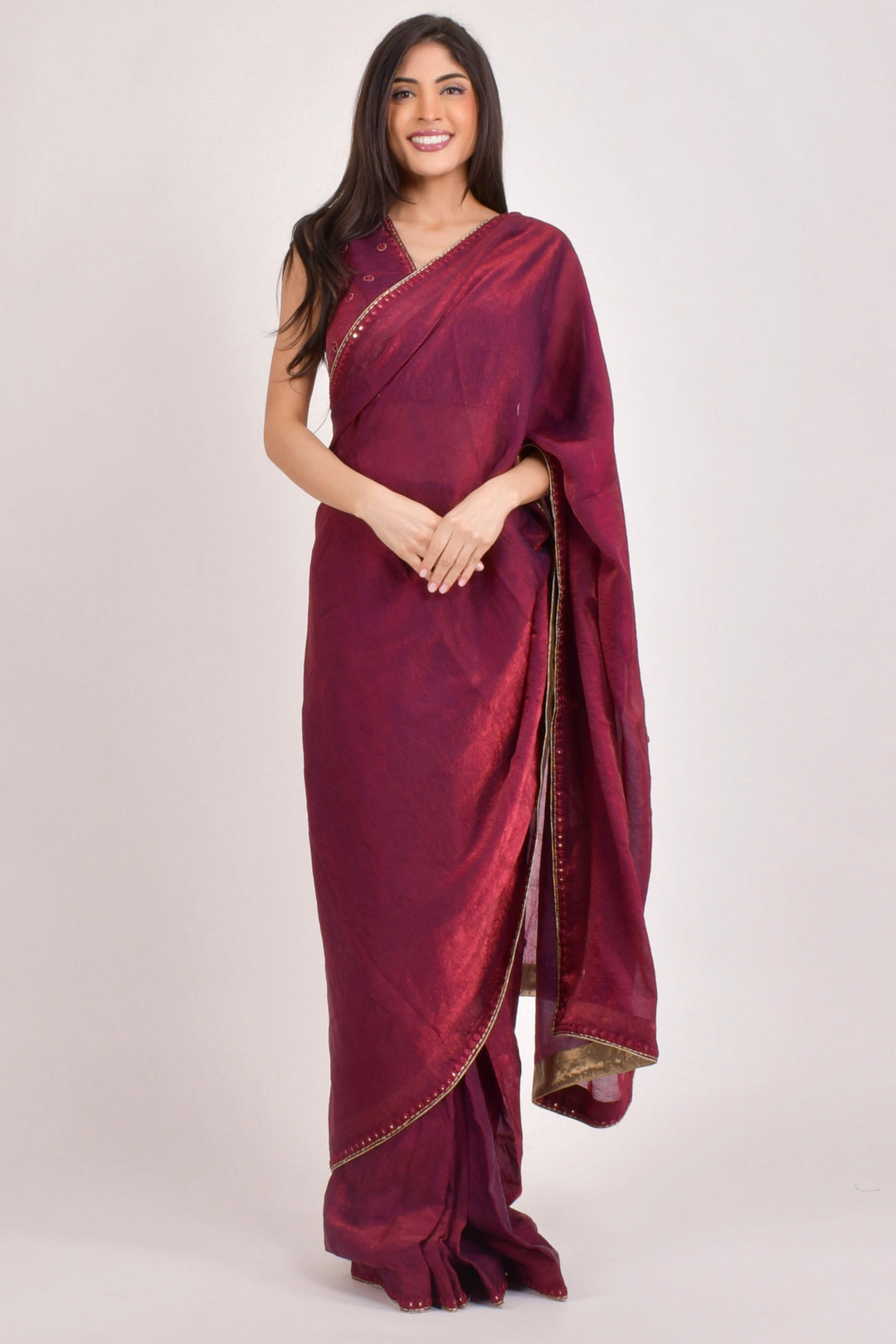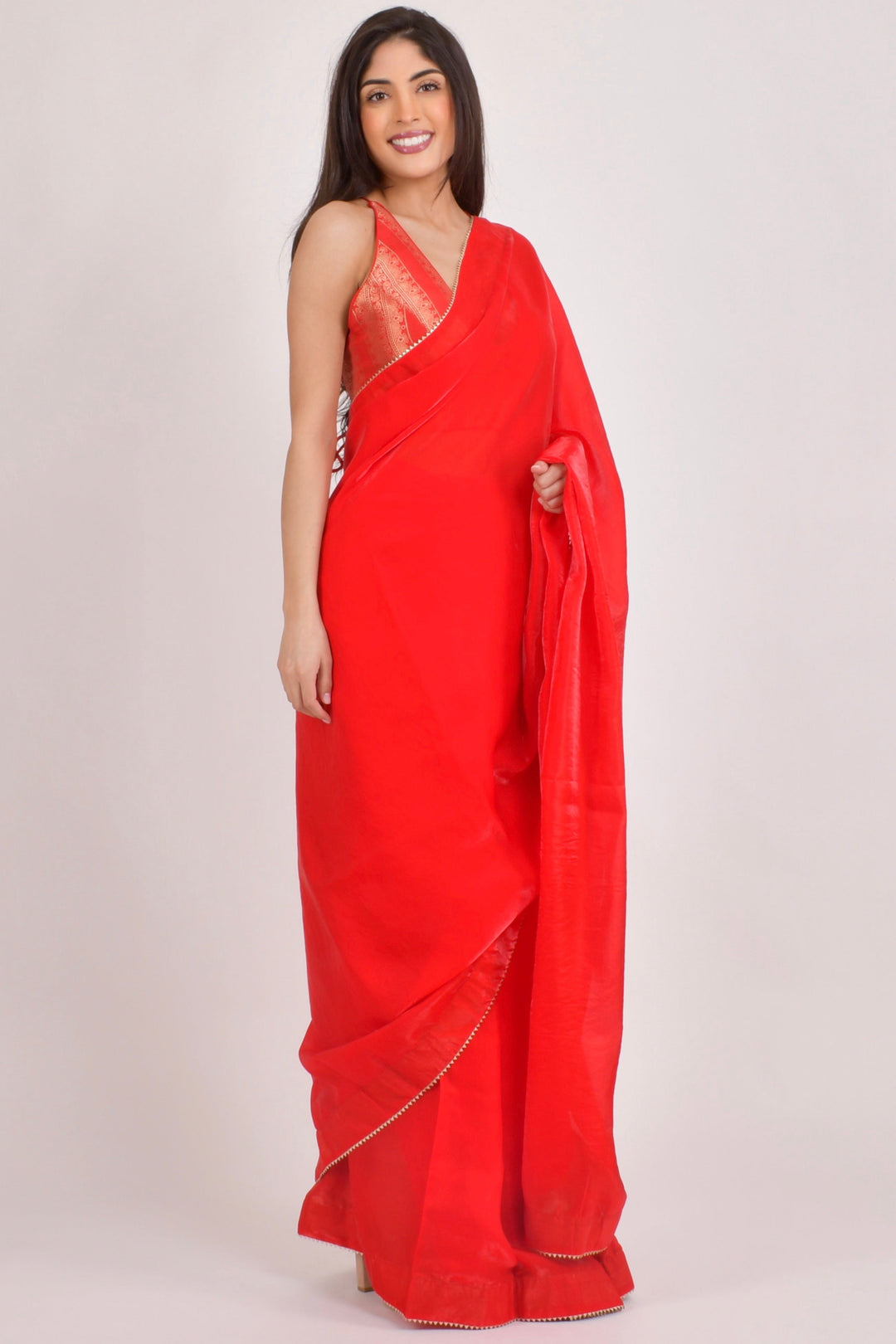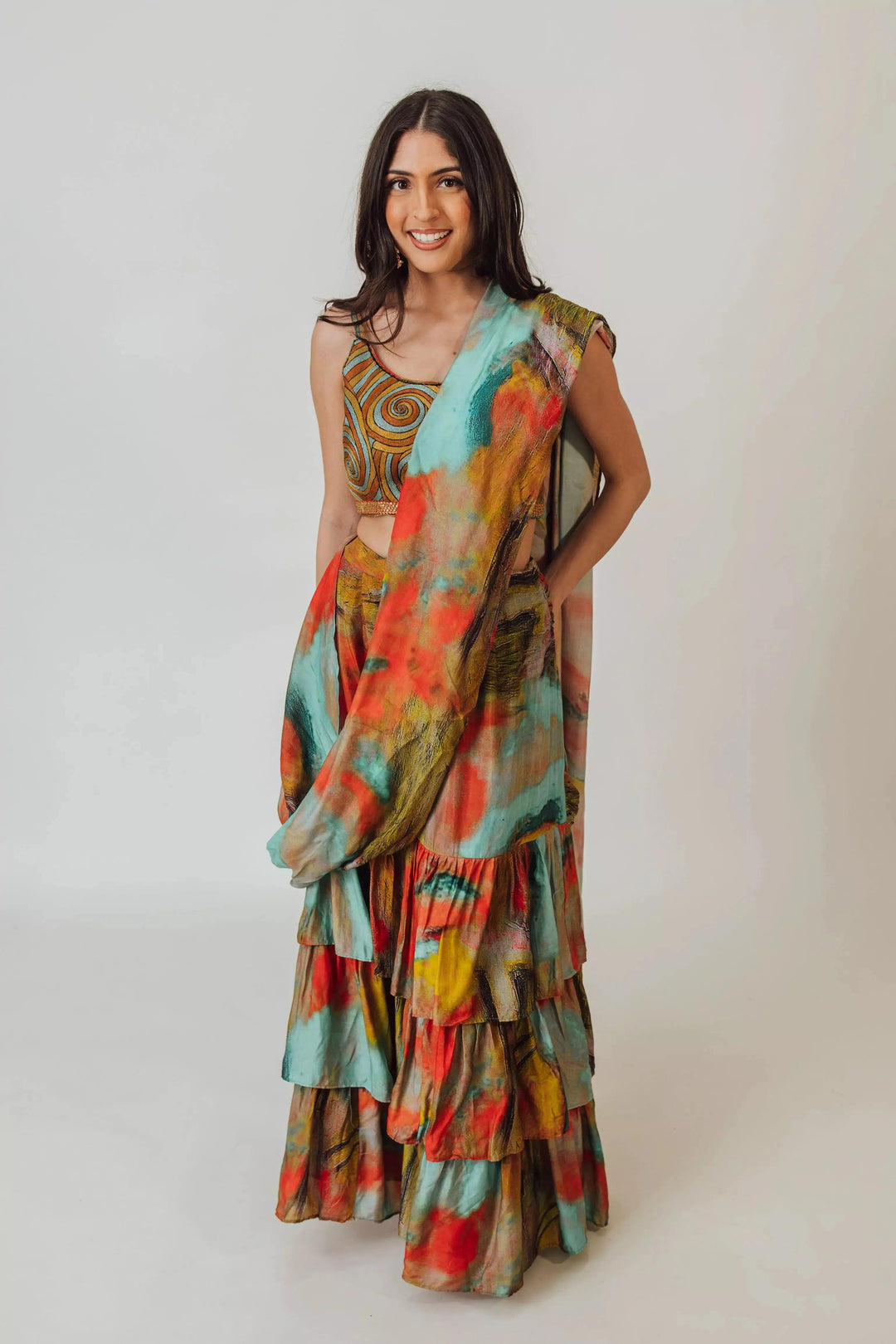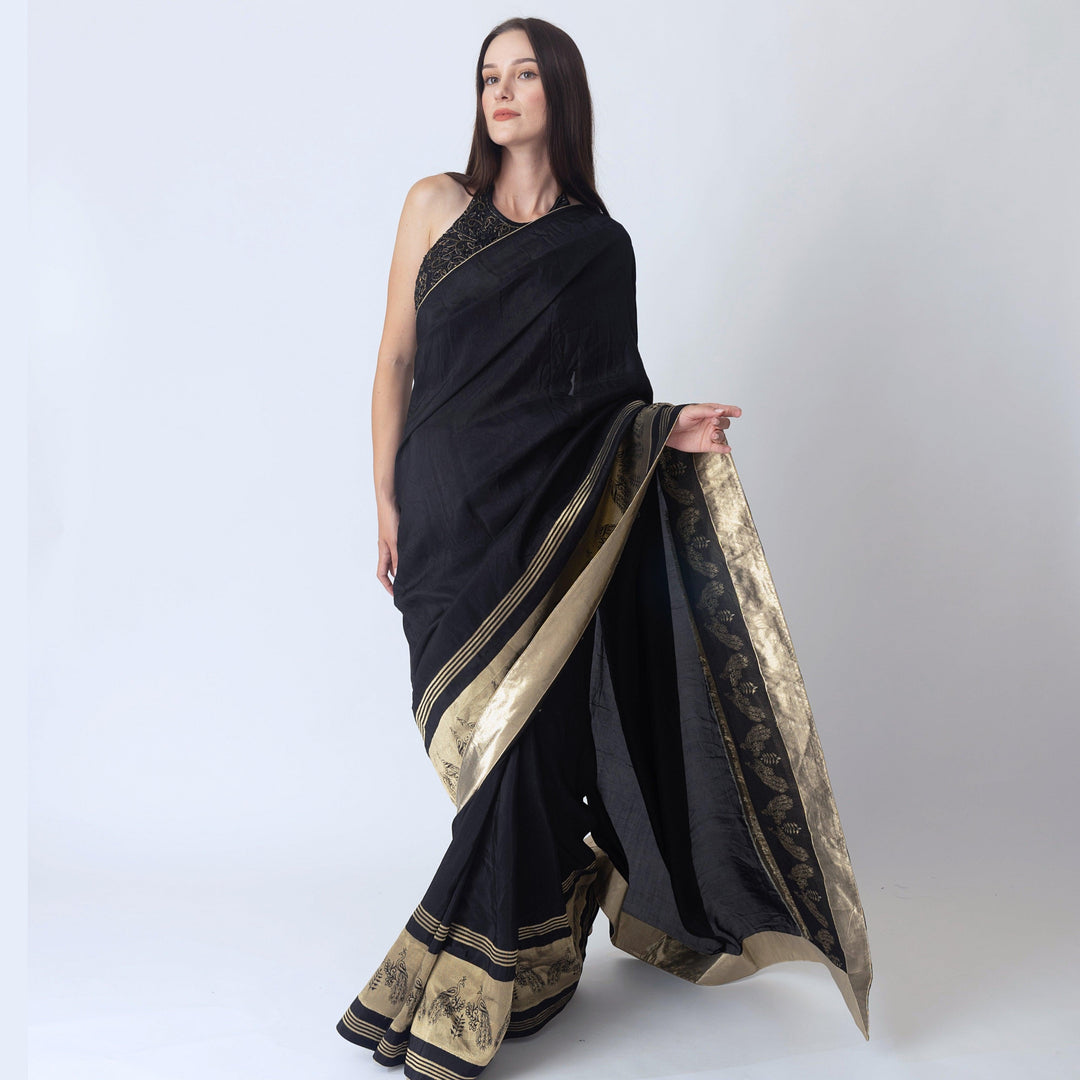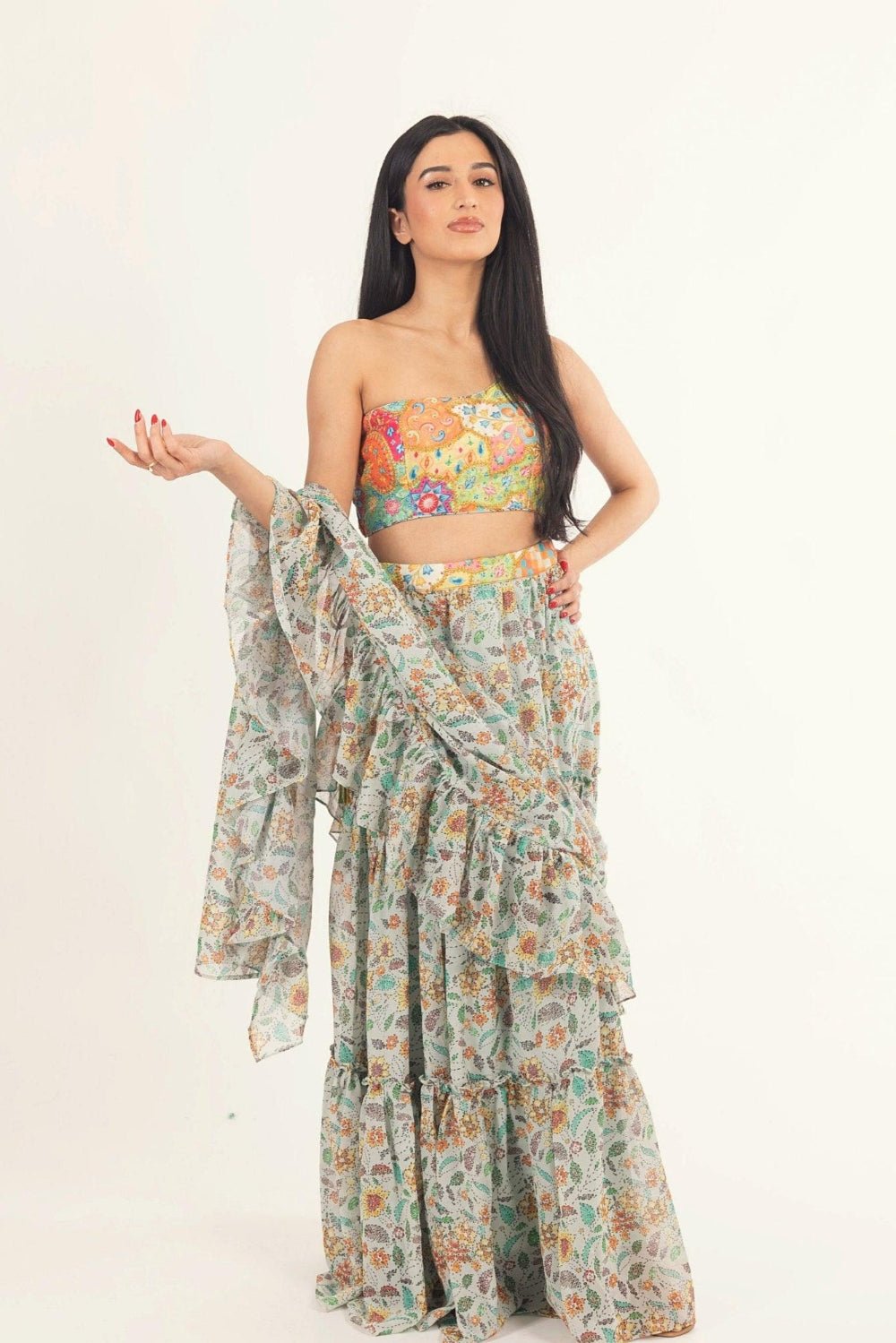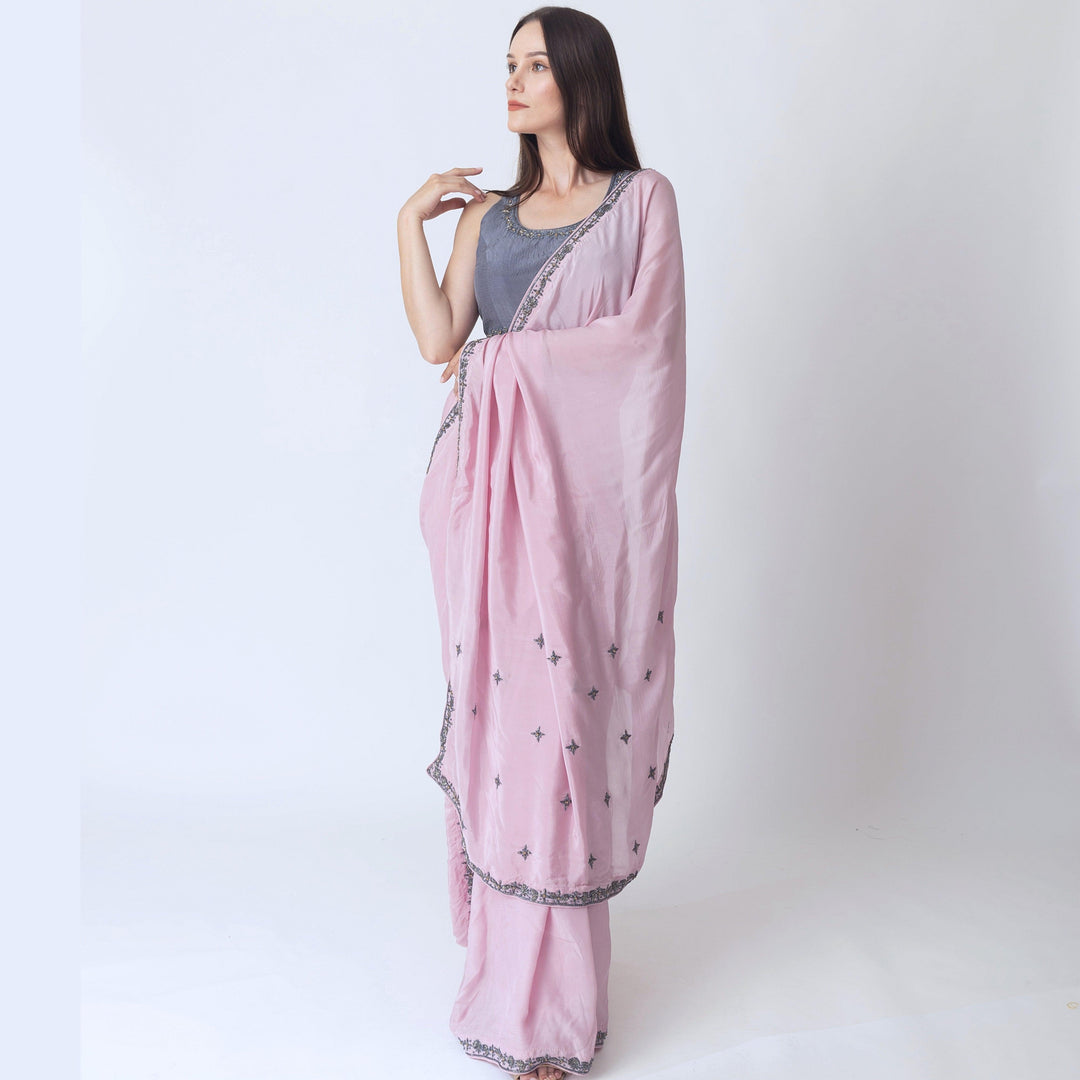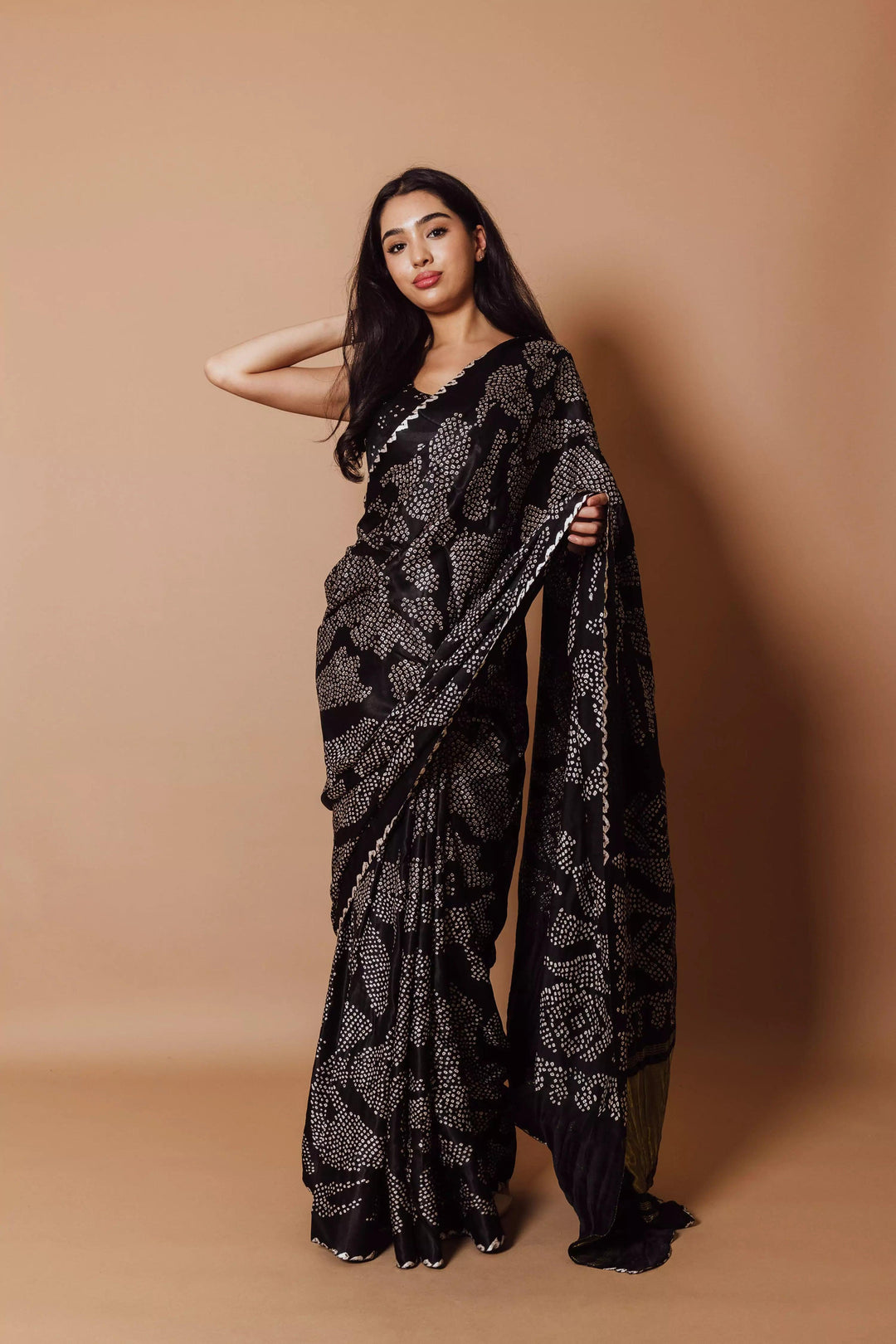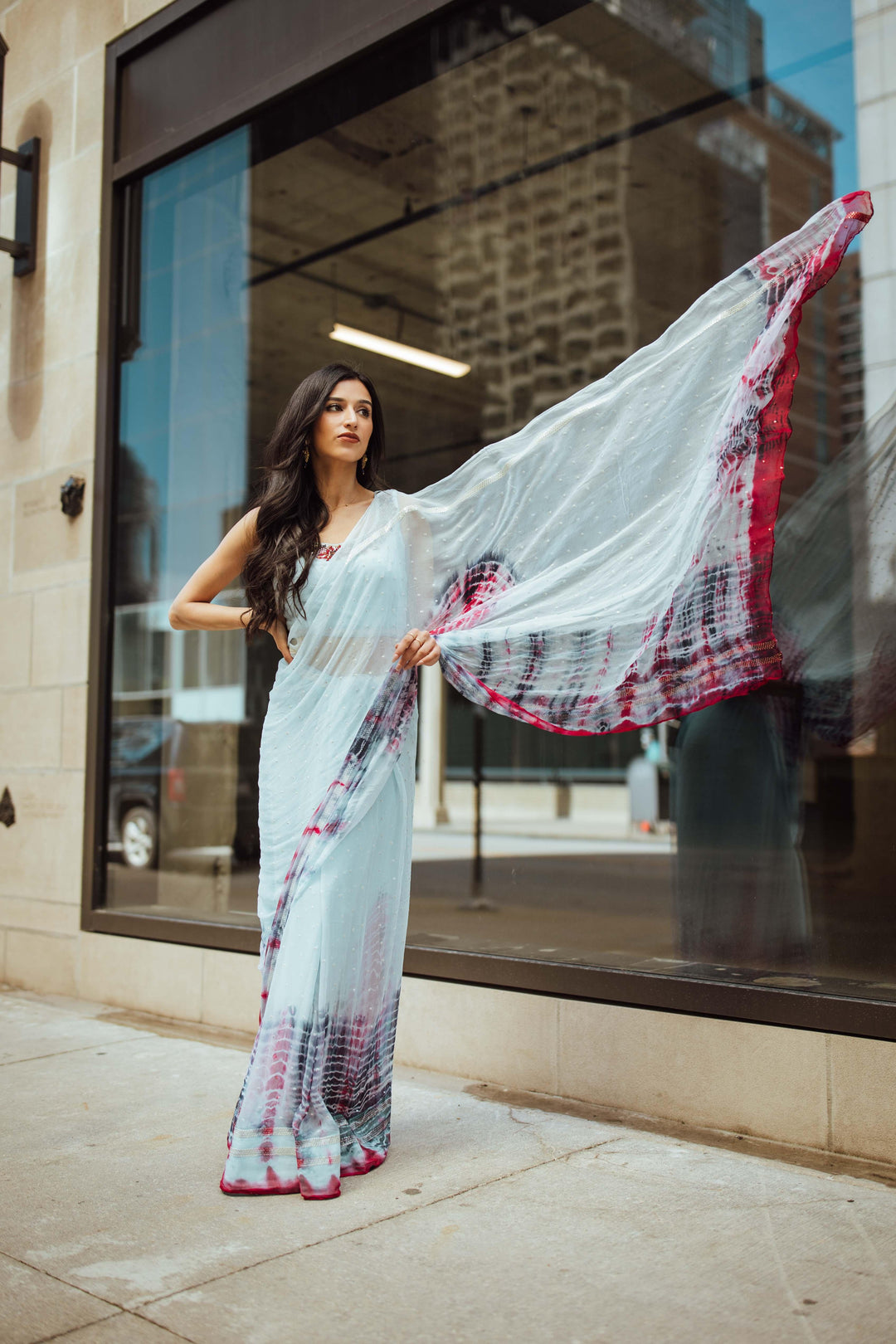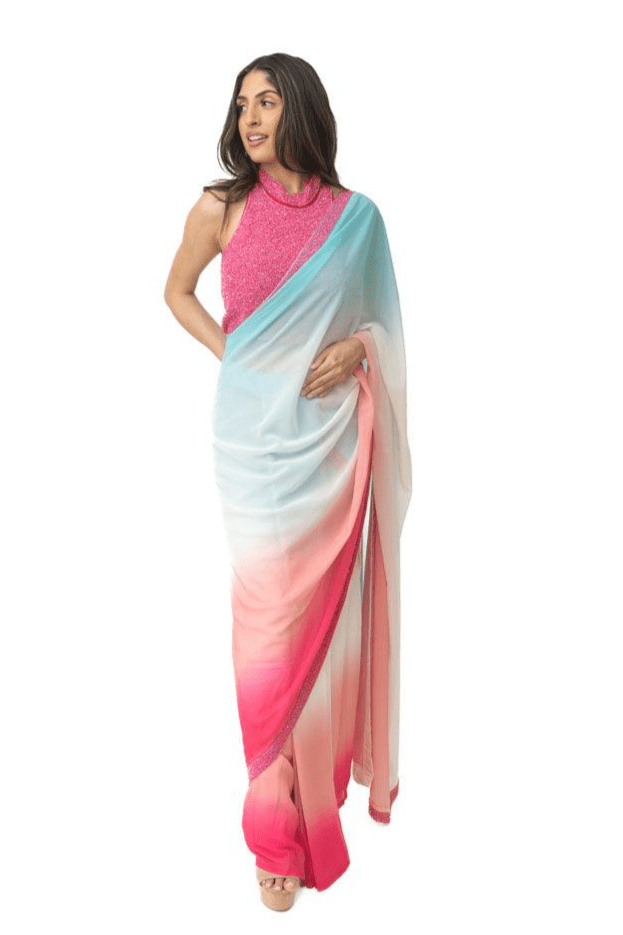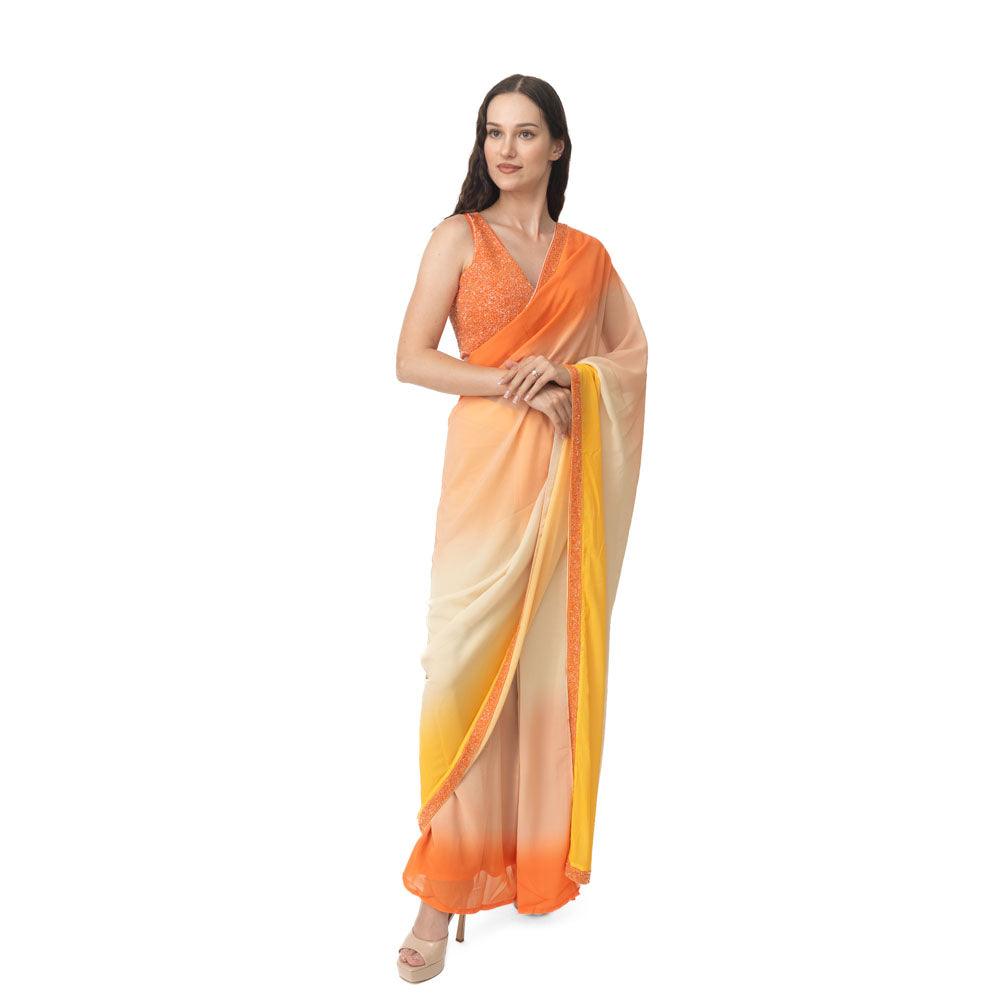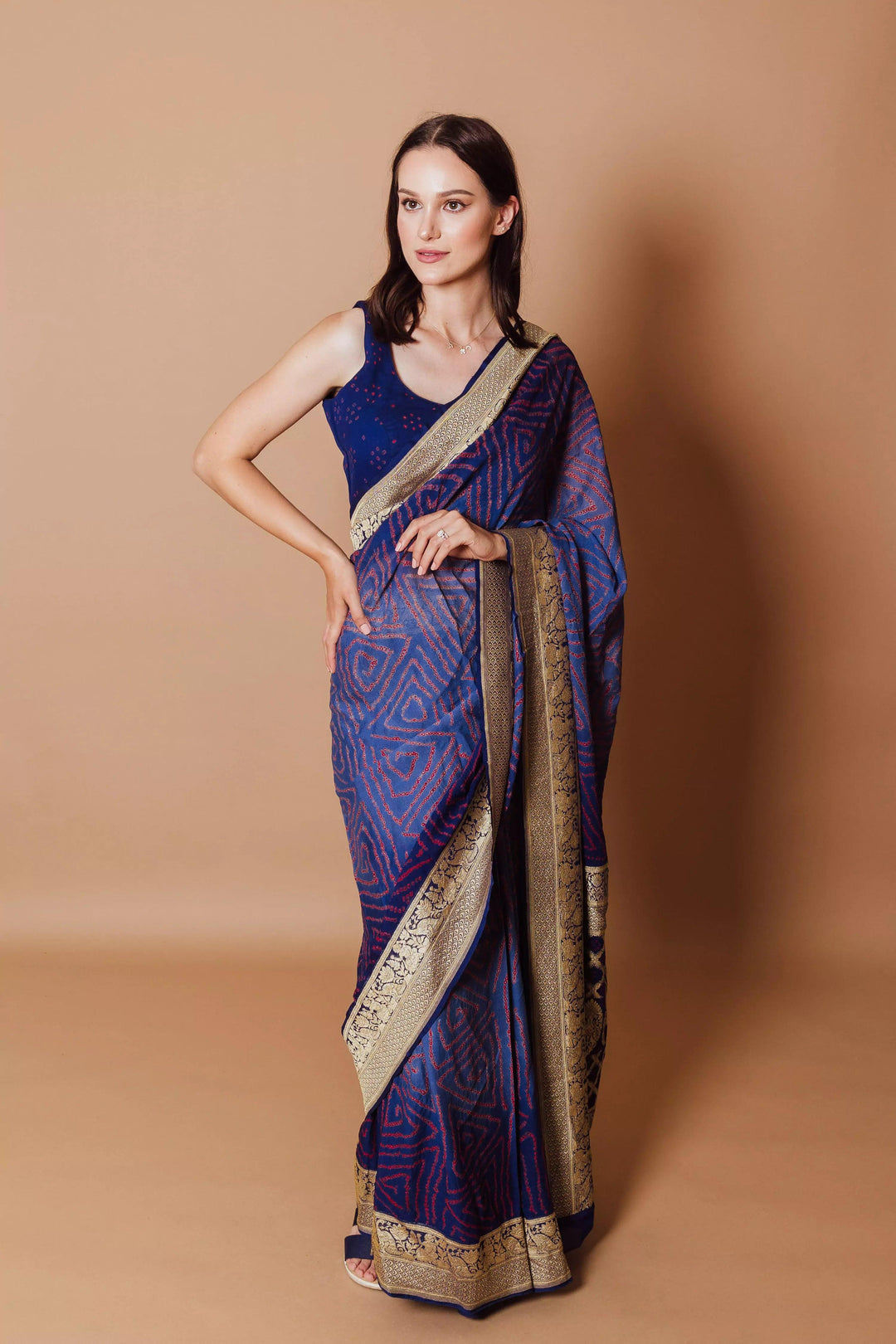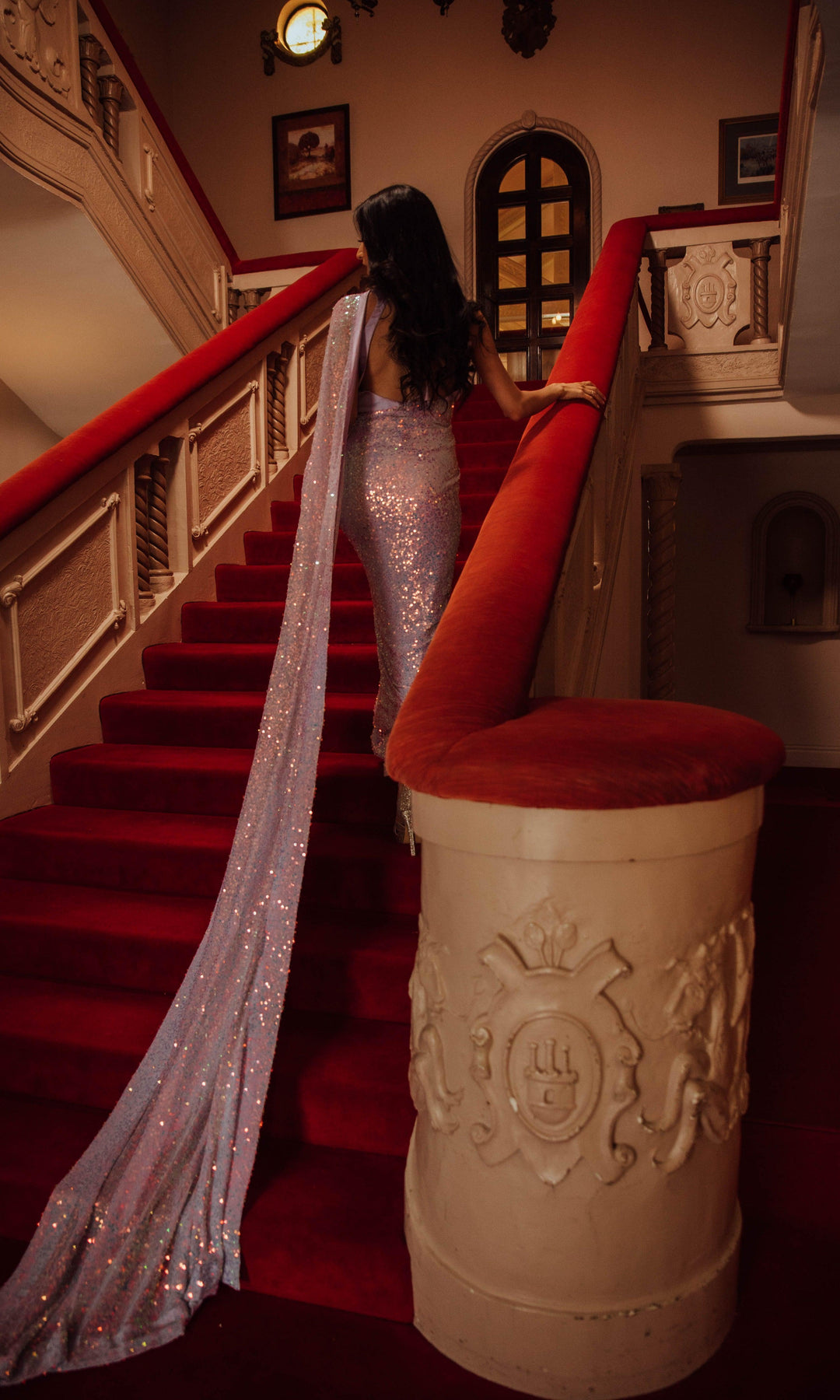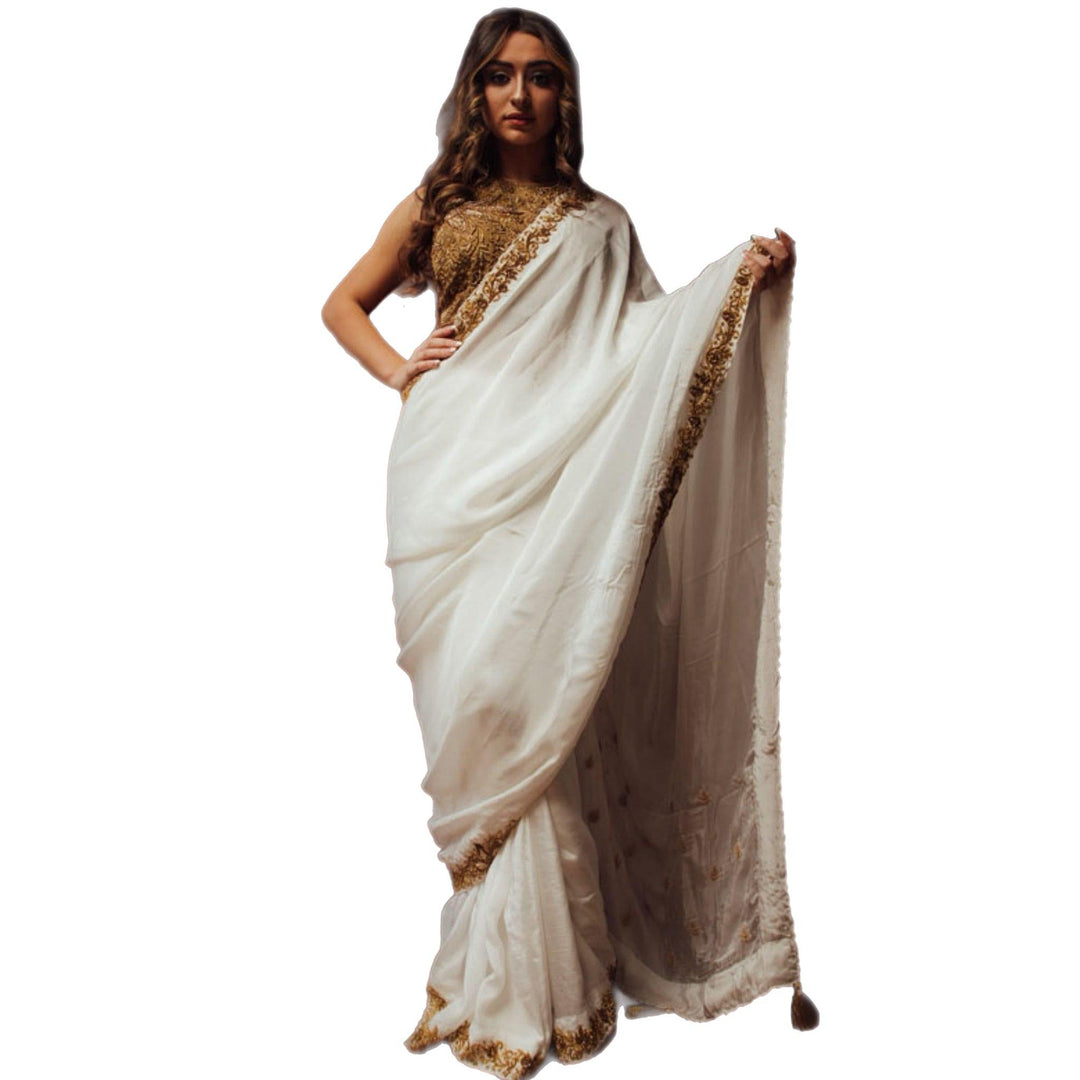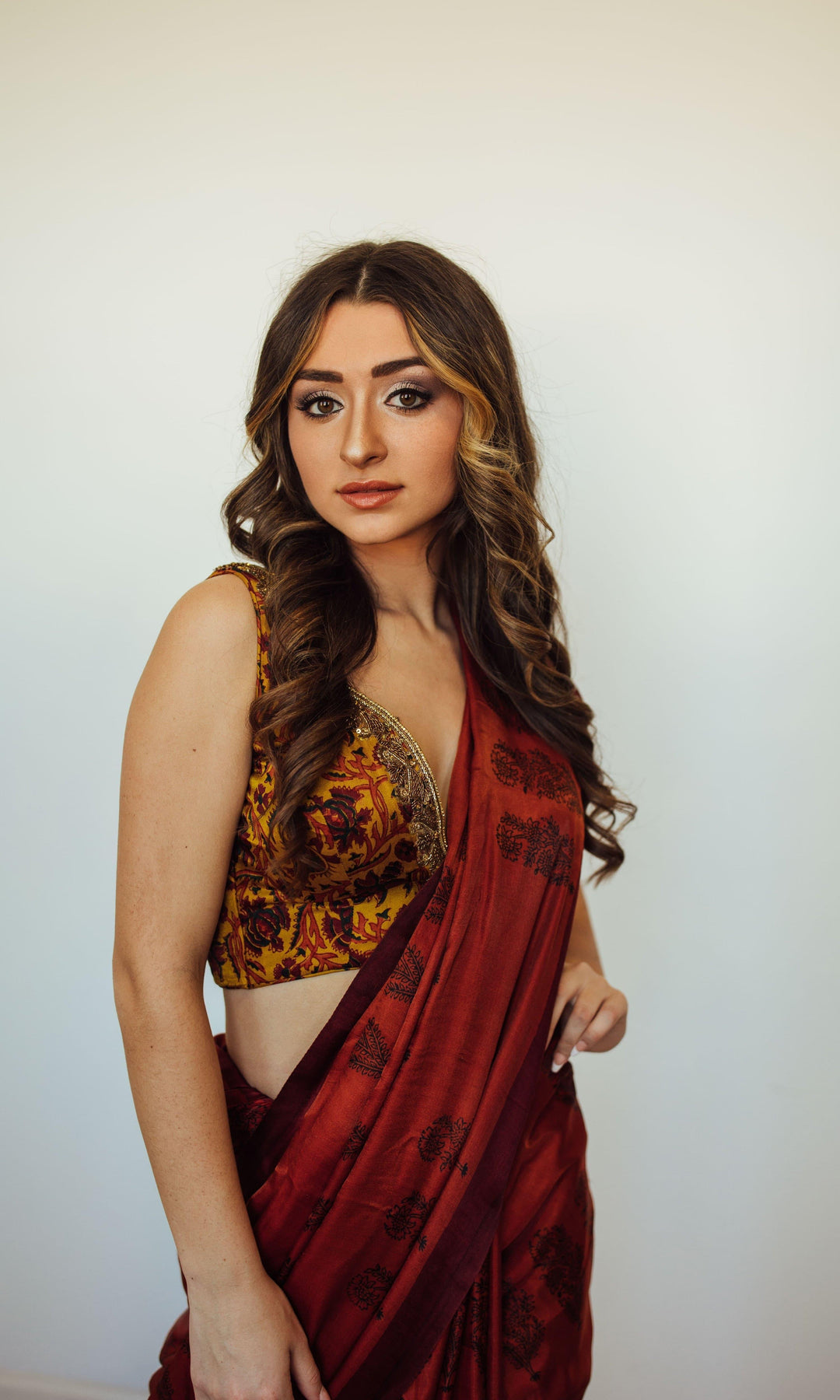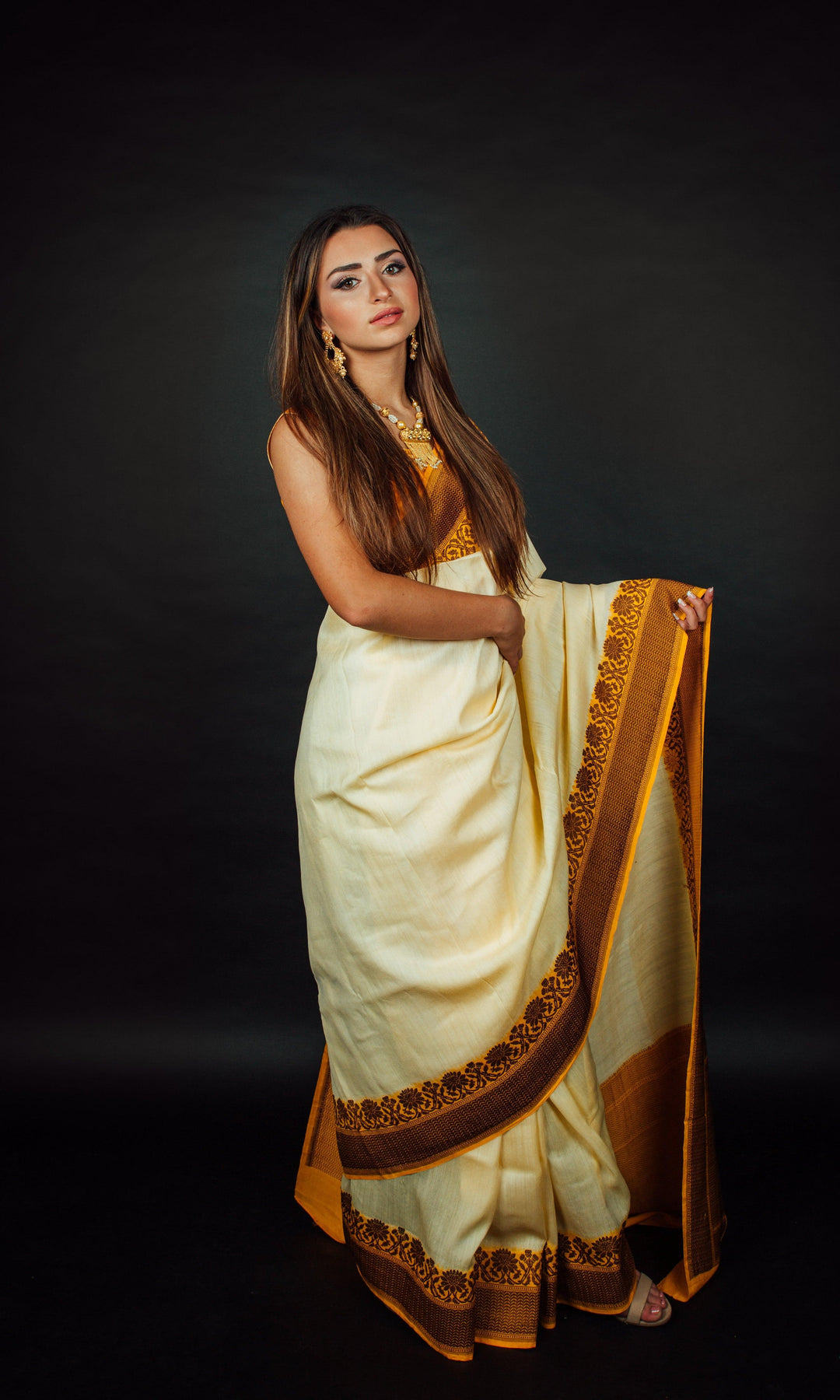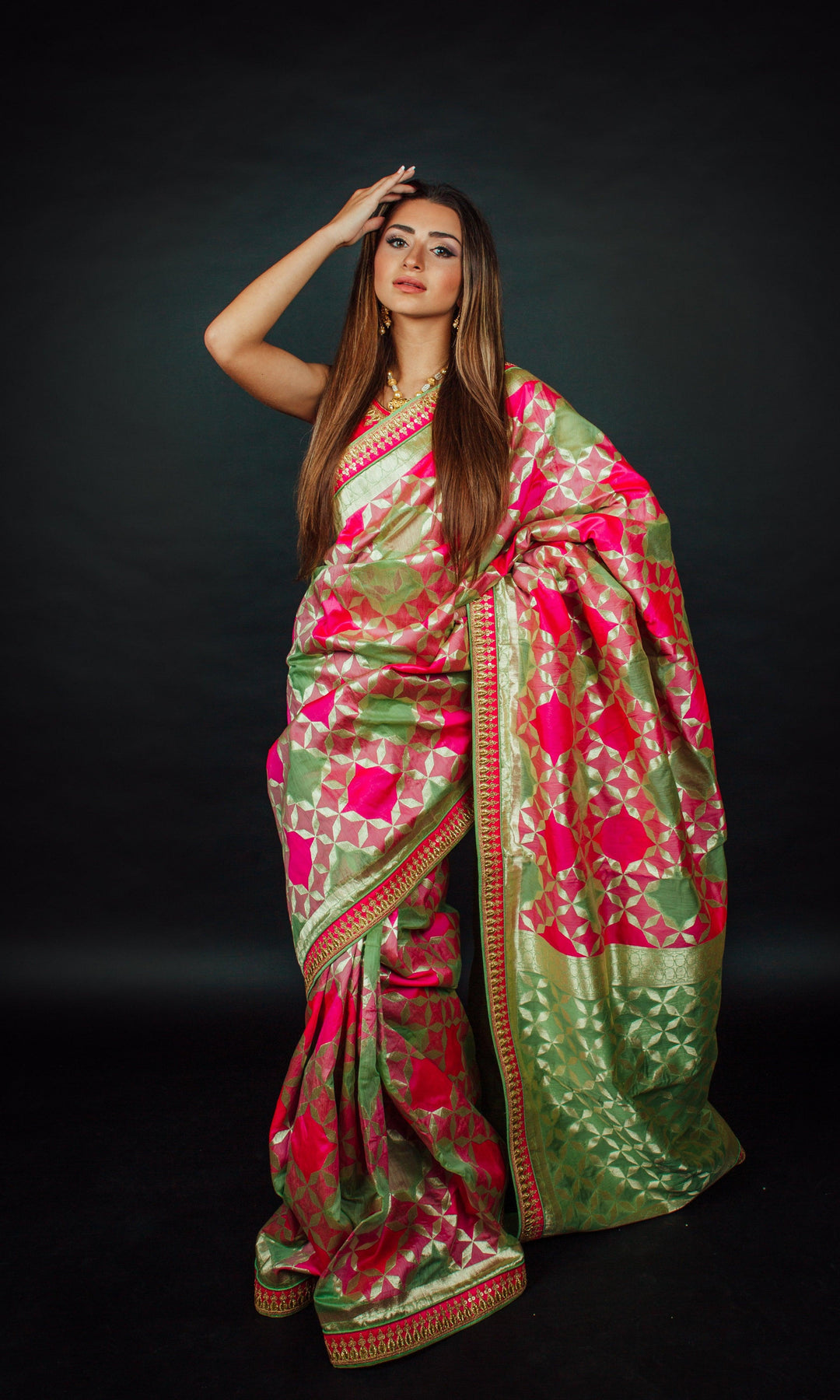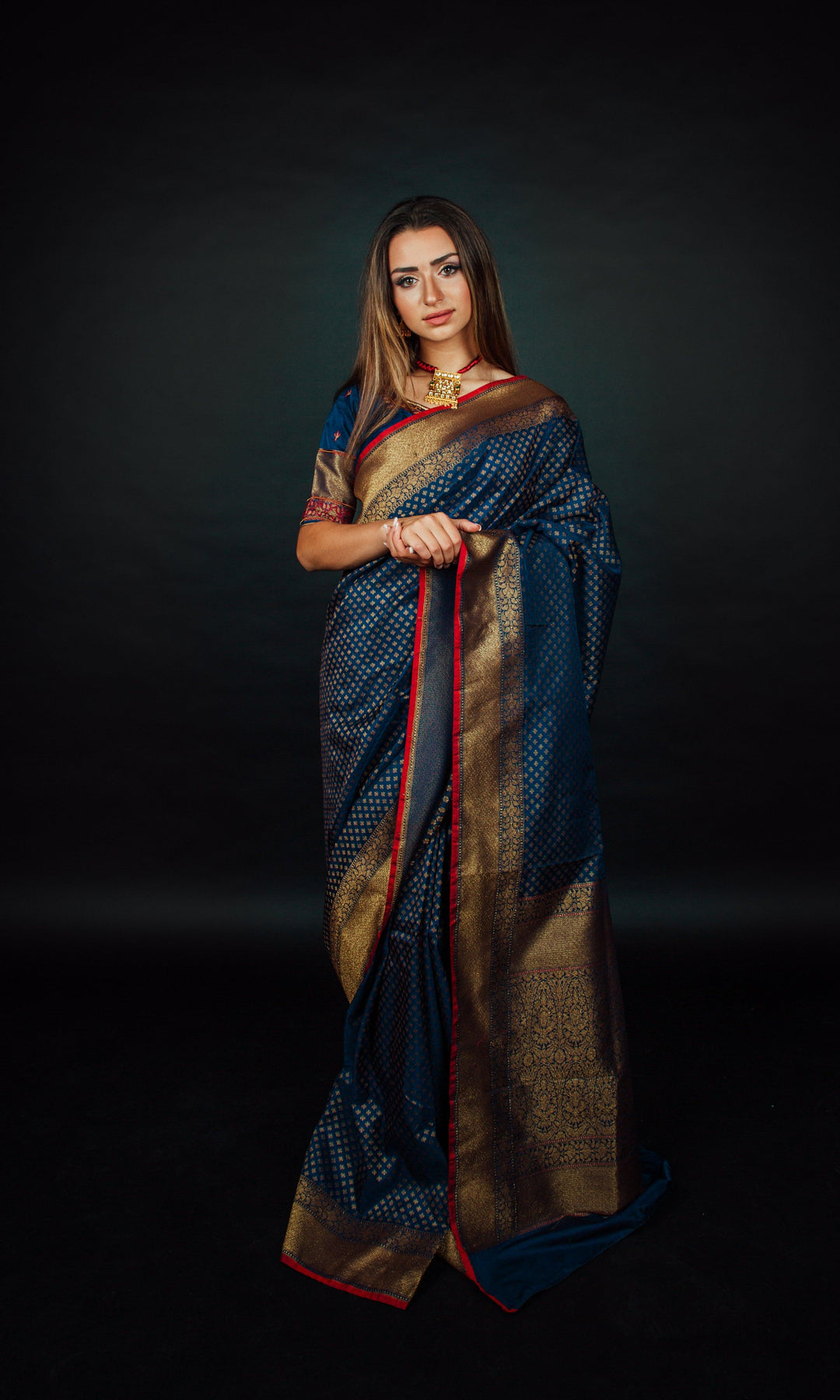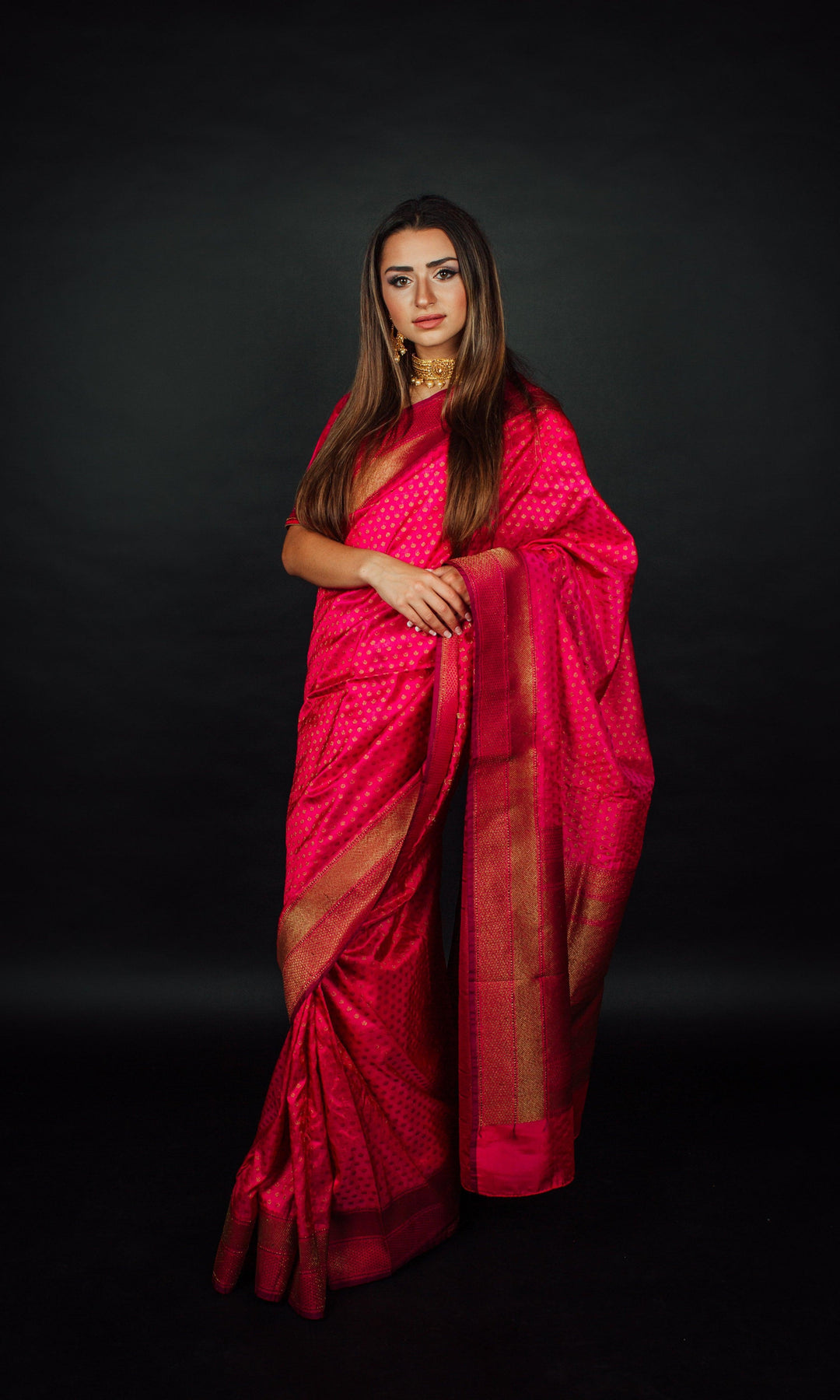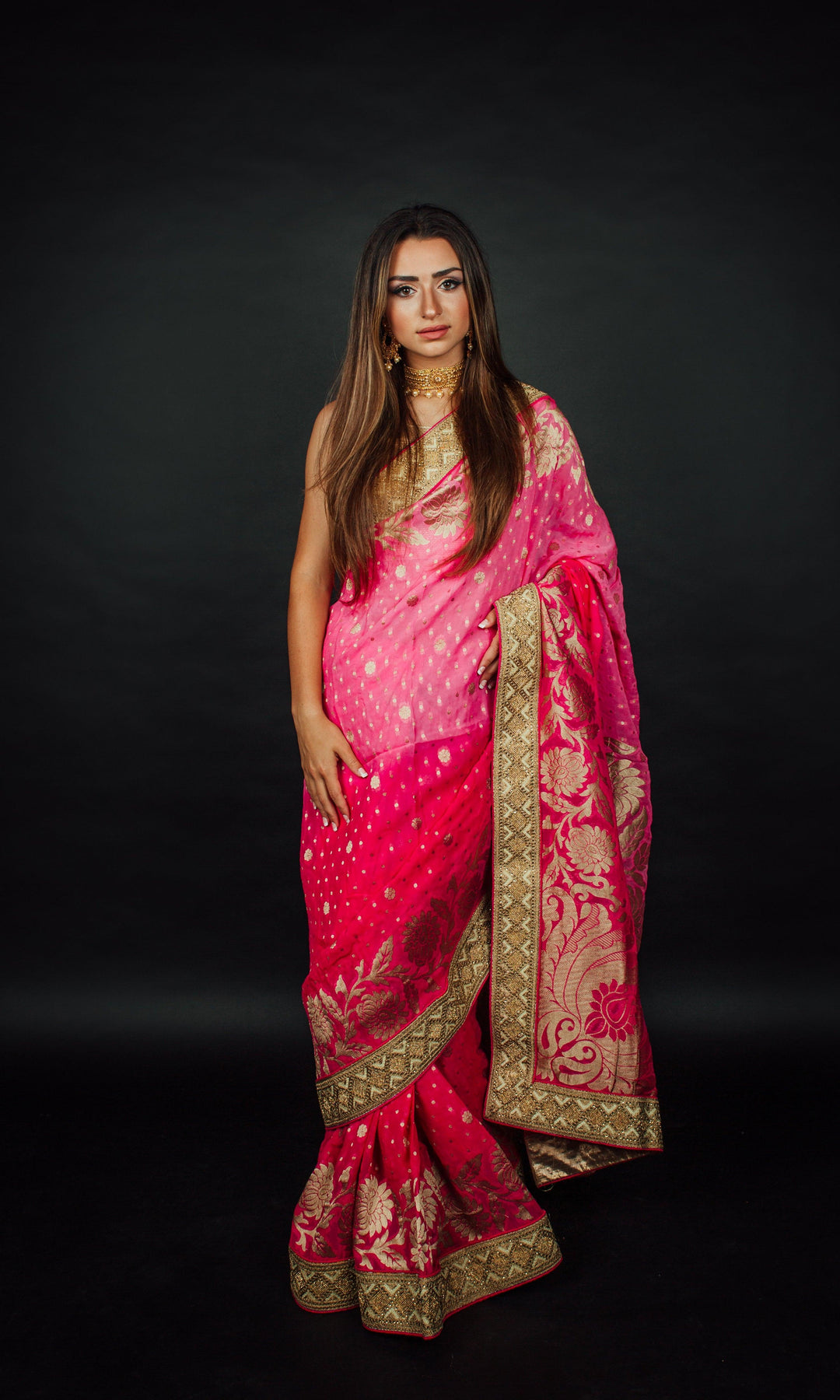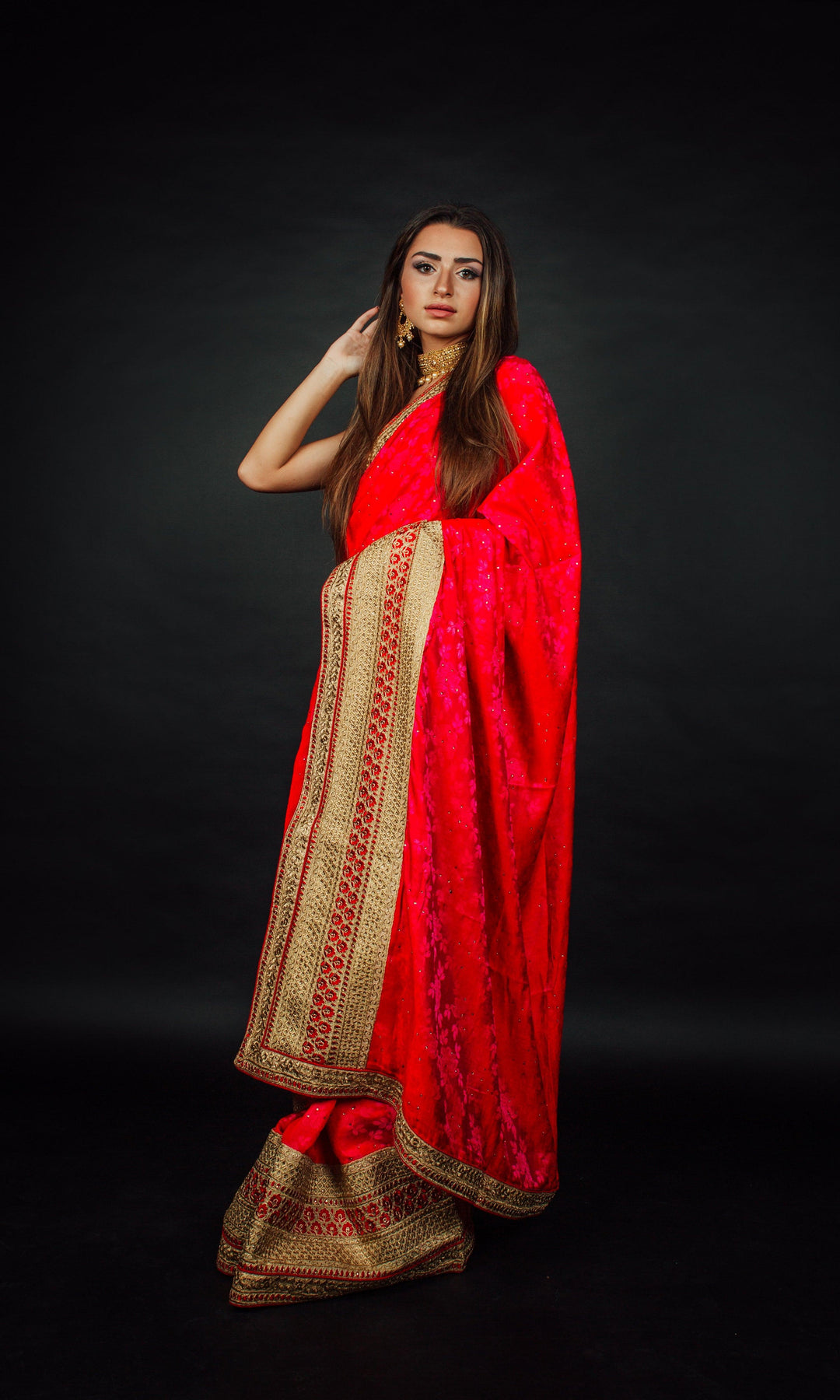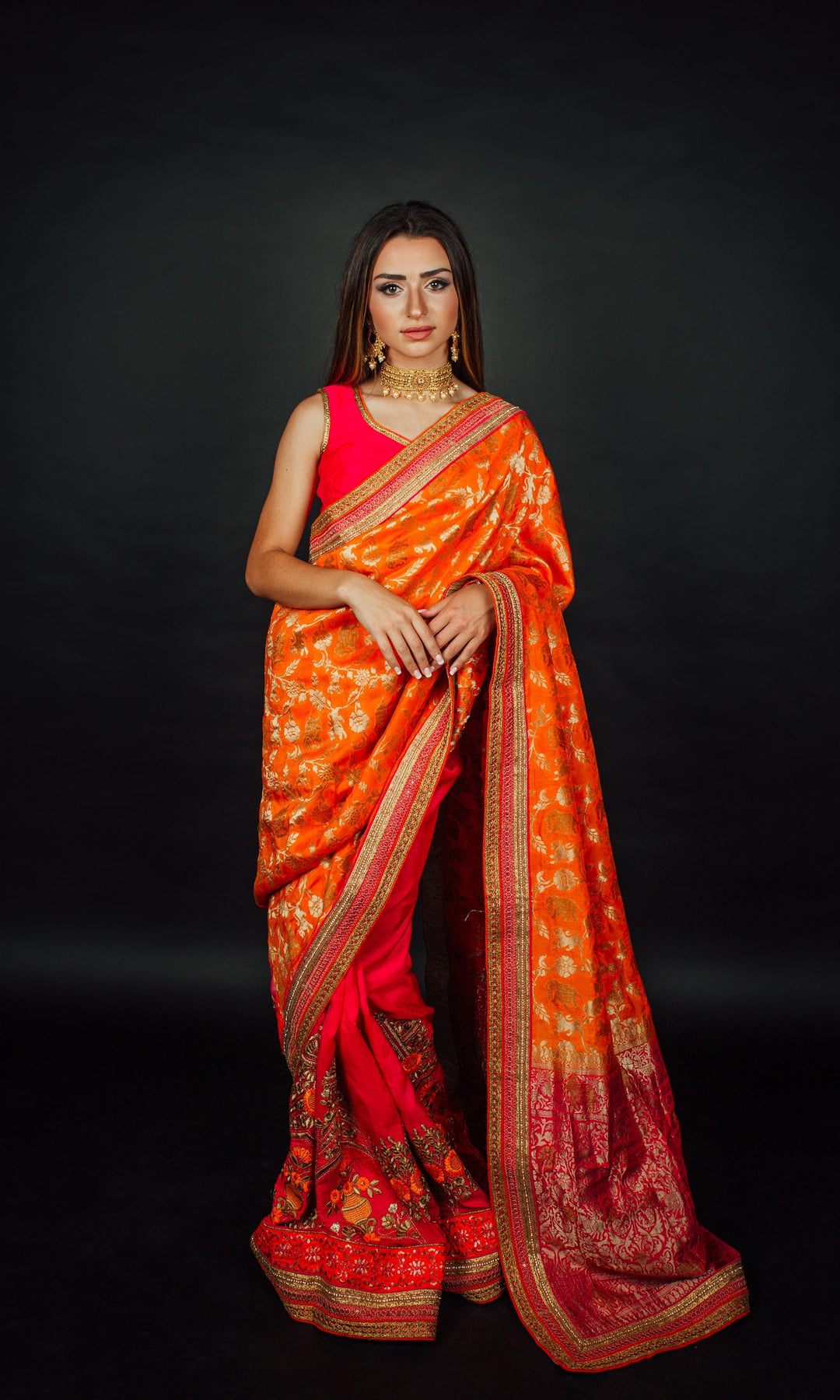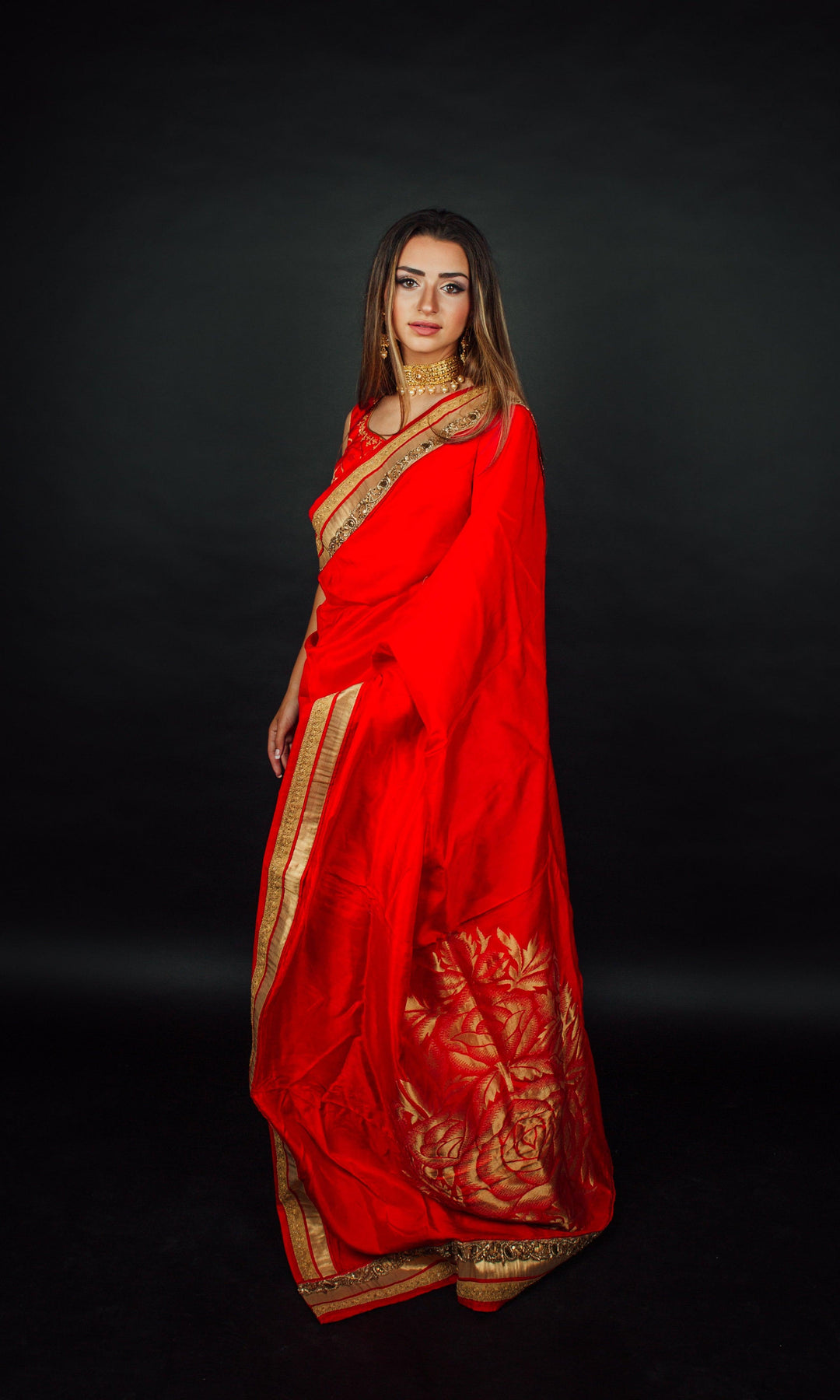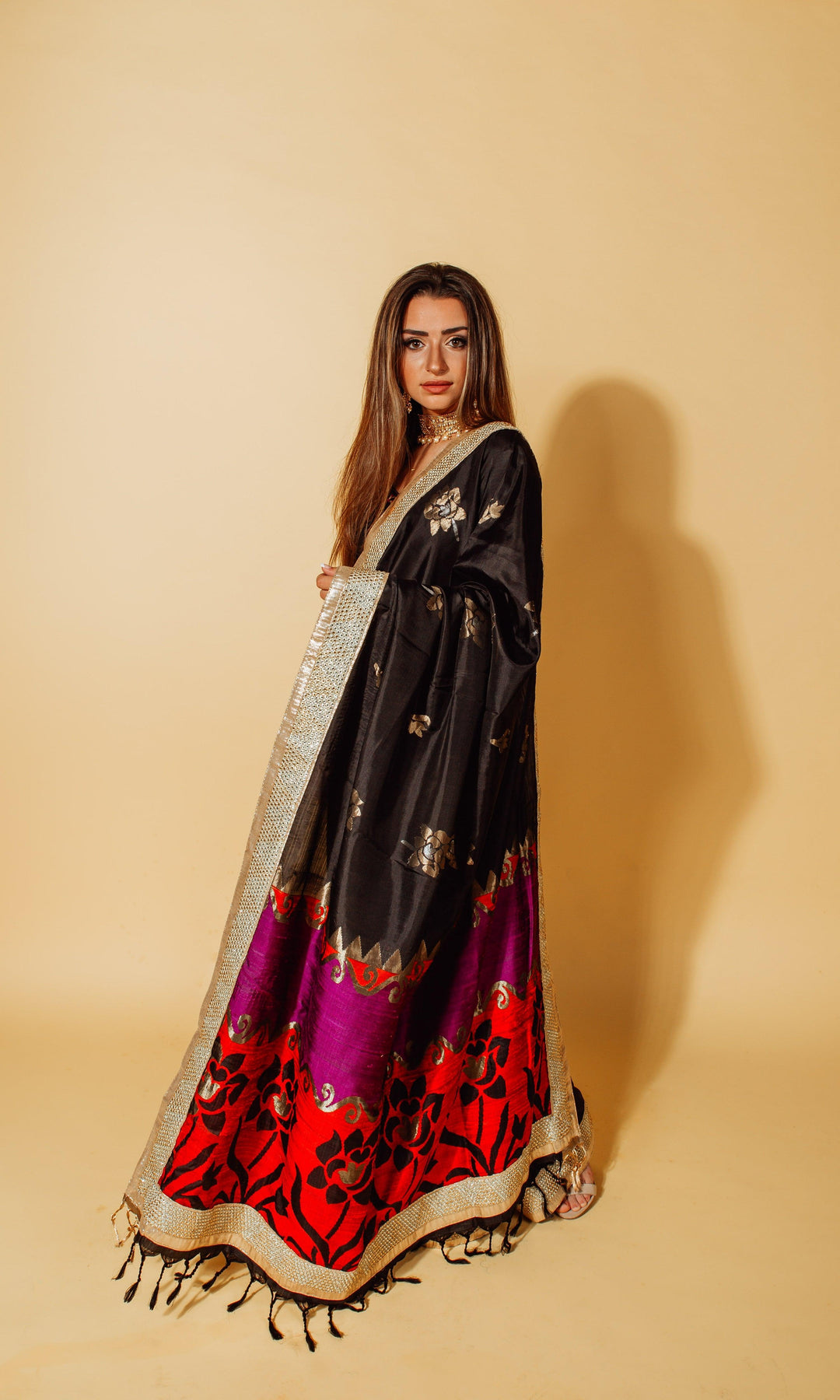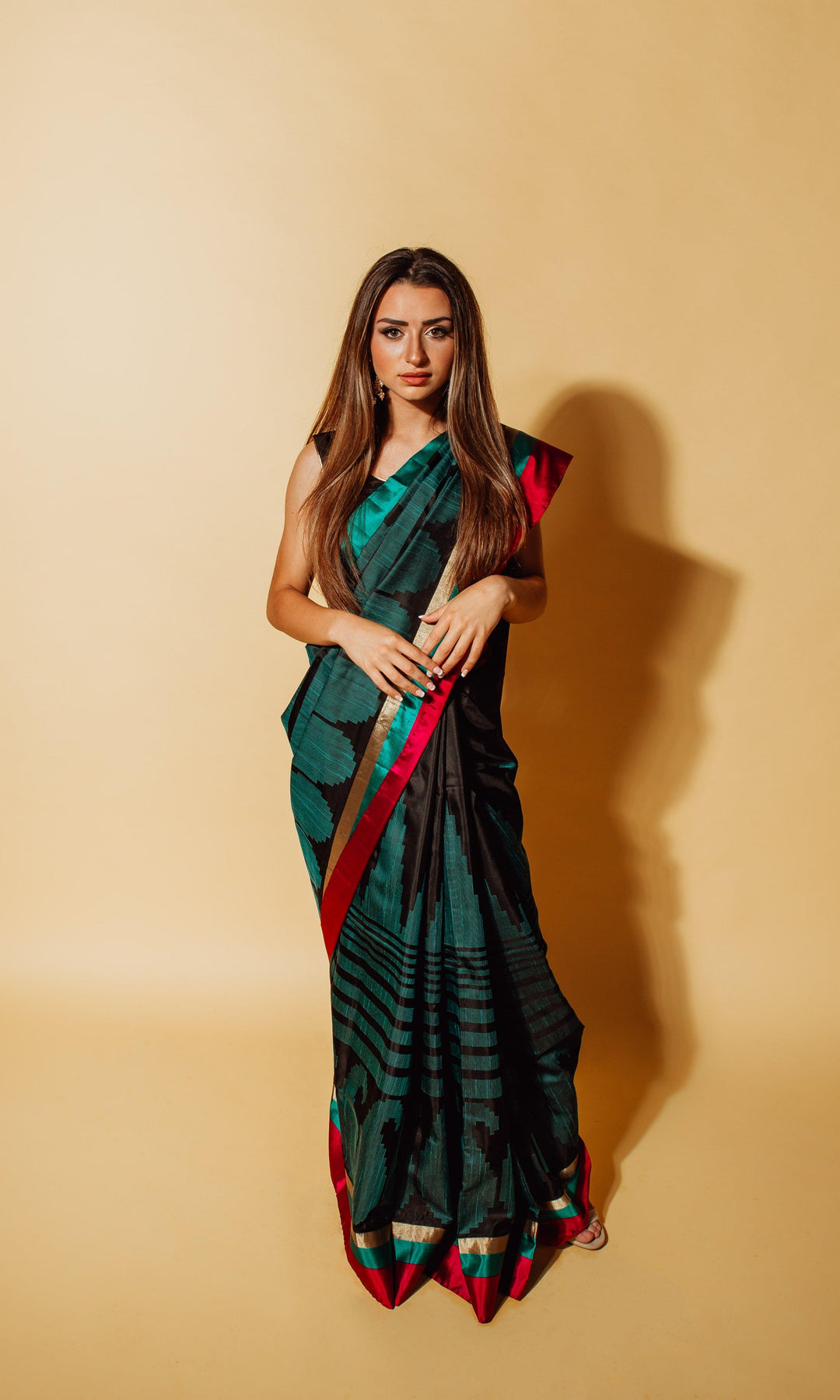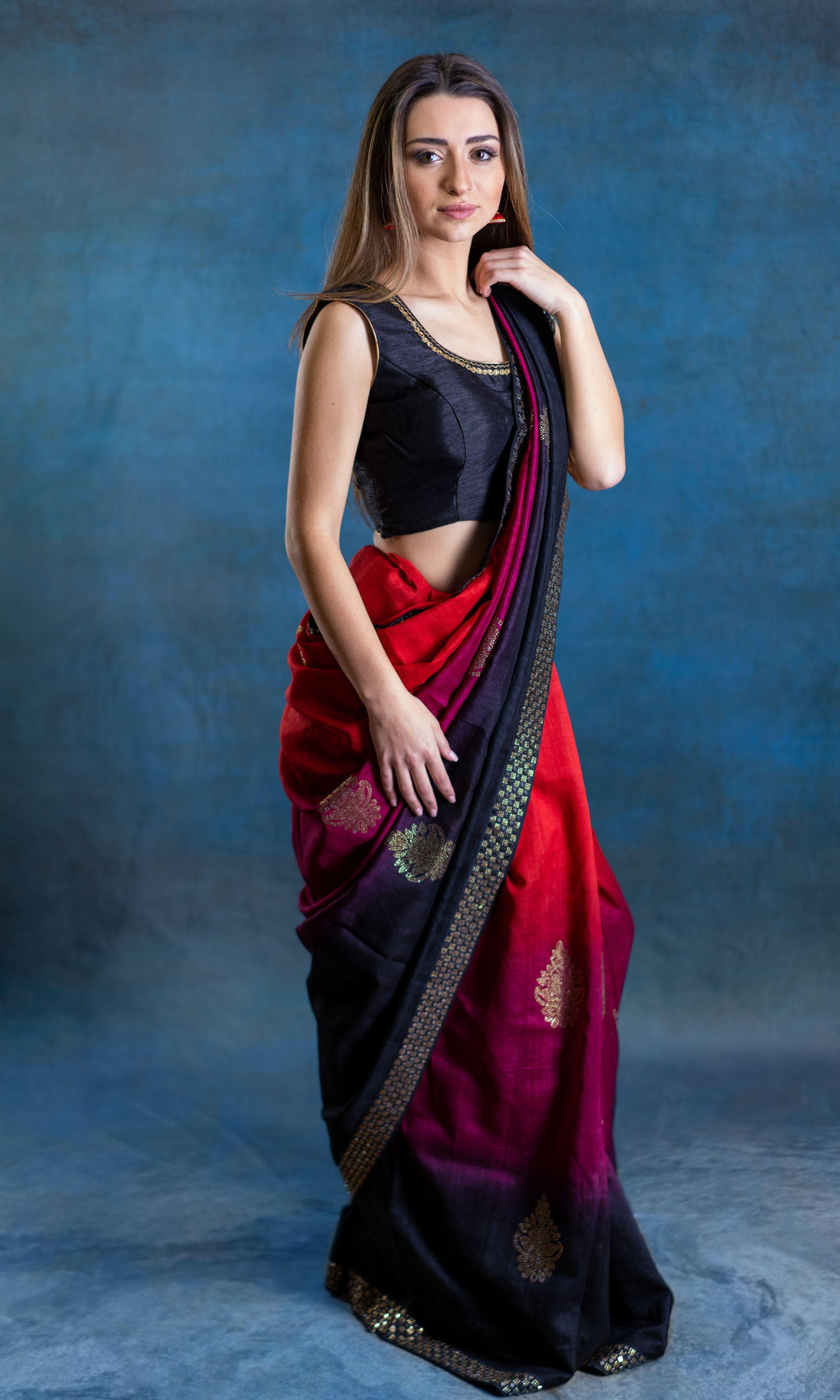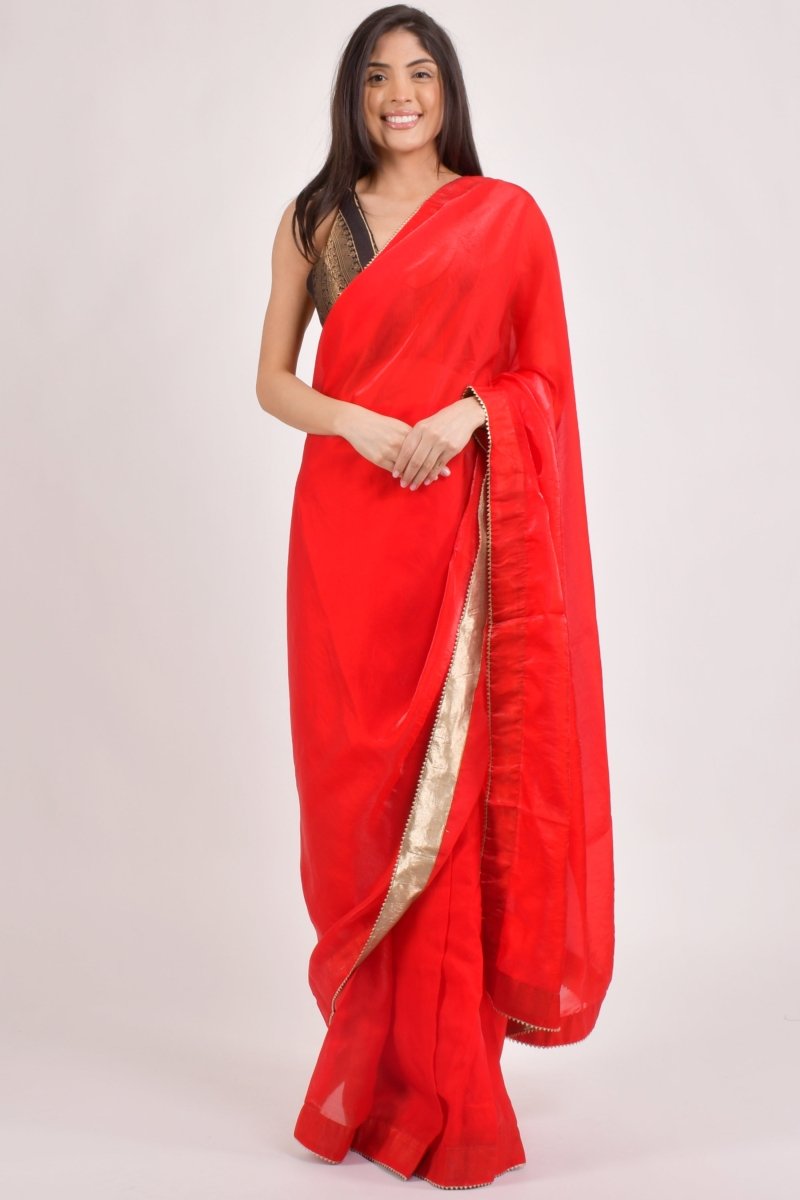Shop Premium Indian Sarees Online in the USA
Discover the perfect blend of tradition and glamour with authentic Indian wedding sarees that honor 5,000 years of textile heritage while making every bride look absolutely stunning. The saree, a timeless emblem of Indian legacy, dates back over 5,000 years to the Indus Valley Civilization, showcasing its enduring cultural significance. This rich history is woven into every thread, making it a cherished garment for generations.
Explore the exquisite range of wedding sarees available in India, featuring luxurious fabrics, intricate designs, and a variety of styles perfect for festivals, weddings, and special occasions. Tussar silk sarees, known for their unique textured finish and durability, are a standout choice, offering the ability to hold intricate designs beautifully.
Indian sarees, renowned for their cultural significance and diversity, encompass a wide array of fabrics and traditional weaves, making them an essential choice for celebrations and important milestones. Common wedding saree colors like red, gold, and pink symbolize love, prosperity, and celebration, adding deeper meaning to these cherished garments. Green represents new beginnings, growth, and harmony, while yellow signifies joy and prosperity, making them popular choices for pre-wedding rituals. Yellow sarees are especially popular for the haldi ceremony, a joyful pre-wedding event celebrated across India.
The Perfect Bridal Saree Awaits You in India’s Rich Textile Tradition
Choosing the perfect wedding saree can feel overwhelming with thousands of options across India’s diverse regions. Every bride deserves to look magnificent on her wedding day, and the search for the perfect saree is all about finding one that reflects both cultural heritage and personal style. The lehenga saree is a popular fusion draping style for modern brides seeking a blend of tradition and contemporary flair. Indian wedding sarees offer the perfect solution—combining timeless elegance with intricate craftsmanship that has been perfected over millennia. Red, the traditional color for Hindu wedding sarees, symbolizes love, commitment, and new beginnings, making it a favored choice for brides.
In Step 3, when considering fabric choices, remember that selecting the right saree fabric is essential for both comfort and style. The right material can enhance your overall look and ensure you feel confident throughout your special day.
Why Choose Indian Wedding Sarees?
Indian wedding sarees stand apart as the ultimate bridal attire, offering unmatched beauty and cultural significance for your most important day.
-
Rich Cultural Heritage – Connect with India’s 5,000-year textile tradition and become part of an unbroken chain of Indian heritage
-
Unmatched Variety – From Banarasi silk sarees to Kanjivaram saree options, endless choices for every preference and wedding theme. Luxurious velvet sarees and lightweight, elegant tissue sarees are also popular picks for wedding events. Kanjivaram sarees are particularly celebrated for their bold patterns and are a symbol of South Indian pride. Silk remains the most sought-after fabric for wedding sarees, with Banarasi and Kanjeevaram being iconic choices. Uppada silk sarees, known for their lightweight feel, also make a grand statement at weddings. Gharchola sarees symbolize fertility and prosperity and are often worn by brides on their wedding day.
-
Versatile Styling – Perfect for all wedding events from haldi ceremonies to grand receptions, adapting to every wedding festivities
-
Timeless Appeal – Investment pieces with lasting impression that remain elegant across generations, treasured family heirlooms
-
Regional Craftsmanship – Support traditional artisans and authentic handwork techniques that showcase intricate craftsmanship and premium fabrics
-
Ideal for Wedding Guests – Indian wedding sarees are also a popular choice for the wedding guest, offering elegant options for attendees seeking the perfect look for any celebration.
With silk wedding saree options ranging from lightweight georgette sarees to luxurious velvet sarees, every bride finds her perfect match in India’s incredible sarees collection.
Experience the convenience of browsing and purchasing sarees online, including a wide range of wedding sarees online, making it easy to access the perfect saree for any occasion. Many of these wedding sarees are ready to ship, ensuring quick delivery and instant availability for customers who need their saree promptly. Silk blend and art silk sarees are also available, offering an affordable luxury without compromising on style or tradition.
How to Choose Your Perfect Wedding Saree
Finding your ideal bridal saree becomes effortless when you follow this proven selection process designed for modern brides.
Step 1: Determine Your Wedding Functions
List specific ceremonies like sangeet, haldi, main wedding ceremony, and reception. Each event calls for different styles—printed sarees for mehendi, silk sarees for the main ceremony.
Step 2: Select Your Regional Style
Choose from Banarasi silk sarees, Kanjivaram saree from Tamil Nadu, Paithani saree from Maharashtra, or other regional varieties that resonate with your family traditions.
Step 3: Pick Your Fabric and Embellishments
Consider silk fabric, georgette, organza, or velvet as your base, then select intricate embroidery, zari work, stone work, or crystal embellishments that complement your vision.
Step 4: Coordinate with Your Jewelry and Makeup
Ensure colors complement your skin tone and overall bridal look. Rich colors like deep reds work beautifully with gold jewelry, while vibrant colours suit contemporary settings.
Step 5: Plan Your Draping Style
Select traditional or contemporary styles based on your comfort level and the long hours you’ll be wearing your saree during wedding festivities.
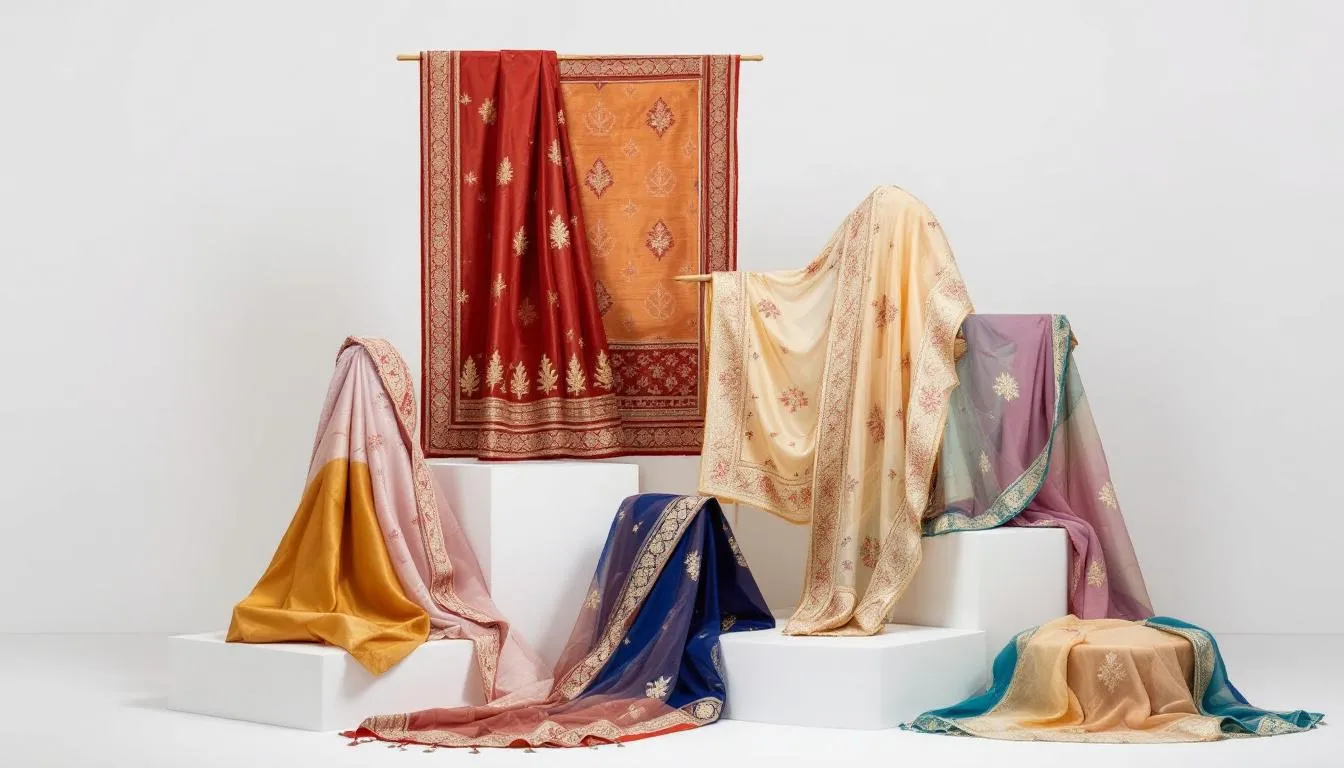
What Makes Indian Wedding Sarees Special?
The distinctive qualities that set authentic Indian wedding sarees apart from any other garment in the world. An Indian wedding saree is renowned for its blend of tradition and modern style, making it the perfect choice for wedding celebrations. Patola sarees, marked by their opulent textures and appealing ikat designs, are a prime example of this exquisite craftsmanship.
-
Handcrafted Excellence – Intricate designs featuring thread work, embroidery, and traditional weaving techniques passed down through generations
-
Regional Authenticity – Each style represents unique cultural heritage from different Indian states, telling stories through geometric patterns, motifs, and vivid colors
-
Premium Fabric Quality – Luxurious materials like mulberry silk, tussar, and art silk that drape beautifully and feel magnificent against the skin, often showcased in vivid colors
-
Customization Options – Blouse designs, border styles, and color combinations tailored to personal preferences and body type requirements
Popular Regional Wedding Saree Varieties
North Indian Specialties
Banarasi Silk Sarees from Varanasi – Heavy zari work with intricate embroidery, perfect for main wedding ceremony. These silk sarees feature rich colors and regal touch that make every bride look majestic. Banarasi silk sarees are renowned for their sumptuous zari work and grand textures, offering an everlasting sheen that makes them a must-have for weddings. Half-and-half sarees, combining different colors, create a dual-tone ethnic look, adding a unique flair to bridal collections.
Bandhani Sarees from Rajasthan – Vibrant colours with tie-dye patterns ideal for mehendi and sangeet functions, offering a contemporary twist on traditional techniques. These sarees, originating from Gujarat and Rajasthan, are defined by their intricate tie-dye patterns and vibrant hues, making them a standout choice for festive occasions.
Chanderi Sarees from Madhya Pradesh – Lightweight silk fabric with gold motifs for reception wear, perfect for brides seeking comfort without compromising elegance. Chanderi sarees are considered ultimate choices for wedding functions due to their beautiful weaves and motifs, making them a timeless addition to any bridal wardrobe.
South Indian Classics
Kanchipuram Silk from Tamil Nadu – Temple border designs with intricate craftsmanship, essential for traditional sarees in South Indian weddings. The heavy silk fabric creates stunning drapes. Kanjeevaram sarees, known for their bold patterns, are a source of immense pride in South India and are often chosen for their grandeur and cultural significance. Similarly, Paithani sarees, with their graceful peacock patterns, enhance the charm of both brides and bridesmaids, making them a staple for weddings.
Mysore Silk Sarees – Elegant drape with lustrous finish for sophisticated ceremonies, offering timeless appeal with contemporary styles.
Uppada Silk Sarees – Lightweight Jamdani-inspired weaves that provide comfort and unique style for extended wedding events.
Western and Eastern Treasures
Paithani Sarees from Maharashtra – Peacock motifs and rich colors for festive functions, representing centuries of weaving excellence and cultural heritage.
Patola Silk from Gujarat – Double ikat weaving for exclusive bridal sarees collections, featuring geometric patterns that showcase masterful technique.
Jamdani Sarees from Bengal – Delicate muslin with intricate designs, perfect for brides who appreciate subtle elegance and traditional artistry. Chikankari sarees, with their delicate hand embroidery, are another sophisticated choice for lighter wedding events, offering understated elegance and timeless appeal.
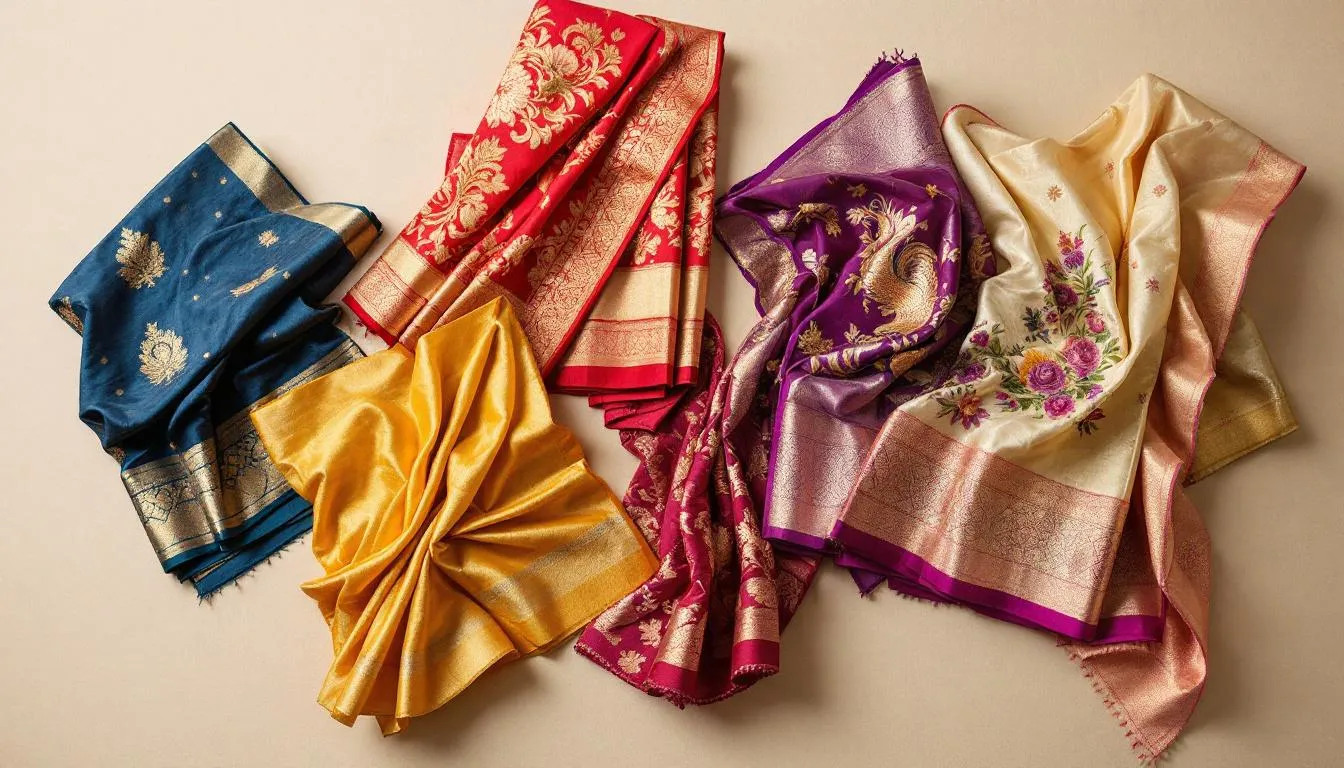
Latest Designs and Trends in Wedding Sarees
The realm of wedding sarees unfolds as a testament to timeless artistry, where each creation honors both ancestral tradition and the modern bride’s discerning taste. Today’s wedding sarees collection speaks to the soul of Indian heritage while embracing the sophistication of contemporary design, offering something precious for every bride’s vision and ceremonial dreams. Wedding sarees carry deep cultural and regional significance, often symbolizing prosperity, love, and new beginnings for the bride. Silk sarees remain the crown jewel of bridal attire, with banarasi silk sarees and kanjivaram sarees standing as masterpieces of handwoven excellence, celebrated for their intricate hand-embroidered details and profound connection to India’s cultural legacy. These luxurious creations are lovingly adorned with elaborate motifs and shimmering zari work, making them the epitome of bridal magnificence in grand Indian celebrations. Gadwal sarees, known for their unique weaves and timeless appeal, are another cherished choice for traditional wedding ceremonies.
For brides who cherish comfort alongside uncompromising elegance, georgette sarees and net sarees emerge as thoughtful choices of extraordinary grace. Their whisper-light drape and delicate texture create an effortless flow perfect for extended wedding festivities, while providing a canvas for stunning mirror-work shimmer and crystal embellishments that dance with light at every graceful movement. Tissue sarees are also a trending lightweight and elegant option, especially favored by modern brides and for destination weddings. Net sarees, with their intricate embroidery, offer a classy yet contemporary look, making them a versatile option for various wedding events. The color palette in wedding sarees speaks in rich, emotional tones—passionate crimsons, vibrant magentas, and warm amber hues remain beloved classics, while softer expressions like ivory silk, warm beige, and gentle pastel shades captivate brides who gravitate toward refined, understated beauty.
In terms of artistry, today’s wedding sarees collection reveals a harmonious marriage of traditional craftsmanship and contemporary vision. Hand-crafted geometric patterns, delicate floral motifs, and thoughtful reinterpretations of classic designs bring distinctive character to bridal sarees, ensuring each bride discovers a creation that speaks to her individual spirit. Whether drawn to the opulent richness of silk or the ethereal beauty of flowing georgette, wedding sarees today offer infinite possibilities for crafting a bridal presence that is both fashion-forward and deeply rooted in timeless elegance.
Saree for Different Body Types: Flattering Your Unique Silhouette
Discovering the perfect wedding saree transcends mere tradition—it becomes an artful celebration of your singular beauty, ensuring you emanate pure radiance throughout your most cherished day. Understanding your silhouette allows you to select a masterfully crafted saree that honors your form while elevating your bridal presence with enduring sophistication and cultural grace.
Petite brides find their luminous essence perfectly complemented by lustrous silk sarees featuring refined, understated artistry that allows their inherent elegance to command attention without overwhelming their delicate frame. Taller brides can embrace the magnificent drama of elaborate traditional masterpieces—think hand-embroidered borders that shimmer with intricate needlework and flowing fabrics that create striking visual harmony with their statuesque presence. Should you possess an hourglass silhouette, seek sarees that honor your waistline through classic draping techniques paired with expertly tailored blouses that celebrate your natural curves with sophisticated precision.
Pear-shaped brides achieve exquisite balance by selecting sarees adorned with richly embellished pallus or mirror-work borders that gracefully draw the eye upward, creating harmonious proportions through thoughtful design elements. For apple-shaped figures, sarees featuring vertical patterns or high-neck blouses crafted to perfection help create an elongated, sleek line that flows with effortless elegance. Regardless of your unique silhouette, the ideal saree—whether woven from luxurious silk threads or adorned with hand-embroidered details that tell stories of heritage—will ensure you embody unshakeable confidence and timeless bridal magnificence throughout every moment of your wedding celebrations.
Saree Accessories and Draping Styles for the Modern Bride
The artistry of bridal sarees transcends mere fabric and thread—it lies in the intimate dance between exquisite craftsmanship and the woman who brings it to life. For the discerning bride, thoughtfully curated accessories and masterful draping transform a beautiful saree into an heirloom moment. Today's brides embrace the poetry of draping—from the timeless grace of the Nivi style to the contemporary allure of the Lehenga saree silhouette and the sculptural elegance of the Mermaid drape. Each technique tells its own story, crafting a distinctive narrative for your most cherished day.
The perfect accessories are the whispered details that complete your bridal symphony. Hand-selected statement necklaces catch the light like captured starlight, while bold earrings frame your radiance with intention. Intricate bangles create music with every gesture, as delicate anklets and ornate hair adornments honor generations of tradition. Each piece—from elegant wristlets to heirloom chains—should harmonize with your saree's hand-woven textures, rich colorwork, and mirror-work shimmer. Whether your heart calls for classic heritage or contemporary refinement, accessories chosen with purpose elevate your entire presence.
Discovering your dream wedding saree through curated collections opens endless possibilities for authentic self-expression. The perfect saree speaks not only to your celebration's essence but whispers your own story—your heritage, your dreams, your unique spirit. When you unite your chosen saree with accessories selected with care and a draping style that honors your silhouette, you create something extraordinary: a bridal presence that feels both timeless and authentically yours, ensuring every moment captures the magic you've always envisioned.
Saree Care and Maintenance
Your wedding sarees represent far more than exquisite garments—they are living testaments to centuries of artisanal mastery, cultural heritage, and breathtaking craftsmanship. Each piece in your bridal collection deserves reverent care to preserve its hand-embroidered details, lustrous silks, and intricate mirror-work for generations who will cherish these heirloom treasures. Here's how to honor the artistry woven into every thread:
-
Thoughtful Storage Rituals: Your silk sarees and velvet masterpieces flourish in cool, moisture-free sanctuaries, shielded from harsh sunlight that can fade their vibrant hues. Wrap each piece lovingly in breathable muslin or cotton, creating a protective cocoon that honors their delicate nature. For your most precious Banarasi silk sarees with their intricate gold threadwork, dedicate individual storage spaces to prevent the heartbreak of snagged embroidery or crushed embellishments.
-
Artisan-Quality Cleaning: Delicate fabrics like flowing chiffon, lustrous georgette, and hand-woven silk demand the reverence they deserve. Entrust your bridal treasures to master cleaners who understand the soul of Indian craftsmanship rather than risking home washing. Should circumstances require gentle home care, embrace cool water and the mildest of cleansers, treating each fold with the tenderness you'd show a precious artwork—never wringing or twisting these cultural masterpieces.
-
Gentle Heat Artistry: Transform ironing into a meditation of care, working with slightly dampened fabric under the gentlest heat. Never allow direct contact between iron and the intricate embroidery, stone work, or crystal embellishments that make each saree unique. For your velvet sarees and heavily adorned pieces, steam becomes your ally, preserving both the luxurious texture and the artisan's meticulous handiwork.
-
Safeguarding Embellished Heritage: The hand-embroidered details and shimmering embellishments adorning your bridal sarees represent countless hours of skilled artistry. Shield these treasures from direct sunlight and dampness, using the softest brush to whisper away any dust that dares settle on their brilliance. This gentle ritual maintains the luminous beauty that makes each wedding saree a work of wearable art.
-
Protective Elegance: Consider blessing your silk sarees and premium fabrics with specialized fabric protection, creating an invisible barrier against life's unexpected moments. This thoughtful step proves especially precious for light-hued beauties or gossamer-fine chiffon and georgette pieces that capture every whisper of color and light.
-
Reverent Handling Practices: Approach your sarees with clean hands and a grateful heart, avoiding unnecessary creasing that could mar their flowing grace. When draping these masterpieces for wedding celebrations, ensure each pleat falls perfectly and every pin secures without strain, honoring both the fabric's integrity and the embroidery's delicate architecture.
-
Heritage Preservation Rituals: Regularly commune with your collection, examining each piece for whispers of wear—loose threads seeking attention, colors yearning for restoration, or tiny tears calling for skilled repair. Address these needs promptly through master craftspeople who understand that maintaining these sarees means preserving cultural legacy itself.
Through these mindful practices, your wedding sarees will continue radiating their original splendor, their intricate designs telling stories of heritage and hope for decades to come. Whether you're nurturing a classic Banarasi silk saree with its golden narratives, a regal velvet creation rich with texture, or discovering contemporary wedding sarees that blend tradition with modern artistry, proper care ensures your bridal ensemble remains a breathtaking celebration of cultural pride. Let these garments continue as cherished symbols of your heritage—each fold holding memories, each embellishment catching light like captured starlight on your most treasured day.
Frequently Asked Questions
How many sarees should a bride buy for her wedding?Most brides purchase 3-5 wedding sarees for different ceremonies. The latest wedding sarees collection typically includes one silk wedding saree for the main ceremony, georgette sarees for sangeet, and net sarees for reception.
What’s the difference between handloom and power loom sarees?Handloom sarees feature intricate craftsmanship with slight irregularities that prove authenticity, while power loom sarees offer uniformity. High quality fabrics and intricate embroidery distinguish premium handloom pieces.
How to care for silk wedding sarees?Store silk sarees in cotton cloth, avoid direct sunlight, and dry clean only. Proper care ensures these premium fabrics maintain their timeless elegance for generations.
Can wedding sarees be customized?Yes! Bridal ensemble pieces can be customized with blouse designs, color variations, embroidery patterns, and contemporary twist elements while preserving traditional authenticity.
What accessories complement wedding sarees?Heavy gold jewelry pairs beautifully with silk wedding saree options, while modern touch accessories work well with georgette and chiffon****sarees. Consider skin tone when selecting metals and gems.
Are wedding sarees suitable for winter weddings?Absolutely! Velvet sarees and heavy silk fabric options are perfect for winter weddings, providing warmth while maintaining regal touch and elegance.
What are lightweight wedding saree options for destination weddings?For destination weddings, lightweight saree options include georgette sarees, chiffon sarees, crepe sarees, organza sarees, and tissue sarees. These fabrics are easy to drape, comfortable for travel, and ideal for outdoor ceremonies.
Start Your Bridal Saree Shopping Journey
Begin exploring India’s magnificent wedding saree collection today and discover the perfect bridal saree that will make your special day unforgettable. Whether you choose traditional sarees from heritage weavers or contemporary styles with a modern touch, authentic Indian wedding sarees offer unmatched beauty and cultural heritage. Printed sarees are also a versatile option, suitable for casual parties or daytime outings, offering vibrant and stylish choices.
🔹 Explore Premium Wedding Saree Collections Today 🔹
💡 Start shopping 3-6 months before your wedding for the best selection and customization options. For those seeking fast delivery, look for our ship ready options for immediate dispatch.
🔒 Authentic Handloom Guaranteed | Ship Ready Options Available | Supporting Traditional Artisans
Connect with India’s textile heritage and create memories that last a lifetime with the perfect wedding saree that celebrates both tradition and your unique style.
1. What is an Indian saree?
An Indian saree is a traditional six to nine-yard drape worn by women across India. It’s paired with a blouse and petticoat, symbolizing grace, culture, and femininity.
2. How many yards is a saree and how is it worn?
A saree typically measures between 5.5 to 9 yards. It’s wrapped around the waist and pleated over the shoulder, with regional variations in draping styles. A standard saree length is 5.5 to 6.5 meters, and it is usually accompanied by an additional 0.8 meters for the blouse piece, ensuring a complete and elegant ensemble.
3. What are the different regional styles of Indian sarees?
Popular regional sarees include Banarasi (Uttar Pradesh), Kanjivaram (Tamil Nadu), Bandhani (Gujarat/Rajasthan), Paithani (Maharashtra), and Sambalpuri (Odisha).
4. What is the cultural significance of a saree in India?
The saree represents Indian heritage and tradition. It’s worn for festivals, weddings, and daily life, reflecting elegance, modesty, and craftsmanship.
5. Which fabrics are best for everyday sarees?
Cotton, linen, chiffon, and georgette sarees are comfortable and ideal for daily wear because they’re breathable and easy to drape. These lightweight and breathable fabrics ensure comfort throughout the day, making them perfect for office wear or casual outings.
6. What are the most popular saree types in India?
Banarasi, Chanderi, Kanjivaram, Organza, Bandhani, and Patola sarees are among the most cherished varieties known for their weaving and detailing.
7. How do I choose a saree for my body type?
Choose light fabrics like georgette or chiffon if you prefer a slim look. Taller women look elegant in heavy weaves and broader borders.
8. What are the trending saree colours and prints in 2025?
Pastel shades, ombré tones, hand-painted prints, and metallic borders are trending, along with sustainable handloom fabrics.
9. How do I drape a saree step by step?
Tuck one end into the petticoat, wrap around once, create pleats in front, tuck them in, then drape the pallu (end piece) over your shoulder.
10. What are some modern or fusion ways to wear a saree?
Try pairing sarees with belts, crop tops, jackets, or boots for an Indo-Western look that blends tradition with modern fashion.
11. How to care for and wash a silk or designer saree?
Always dry-clean silk sarees, use mild detergent for cotton ones, and store them folded in muslin cloth to preserve their sheen.
12. What accessories go well with a saree for different occasions?
Traditional jhumkas, bangles, clutch bags, and heels pair beautifully. For modern looks, opt for minimalist jewellery and metallic accents.
13. Can a saree be worn in Western or Indo-fusion style?
Yes — drape it over pants, jeans, or skirts and style it with blazers or belts for a chic fusion twist.
14. How to store a saree properly to maintain its quality?
Keep sarees in breathable muslin covers, refold every few months, and avoid hanging heavy silk sarees to prevent stretching.
15. What size or measurements do I need when buying a saree online?
You’ll need bust and blouse size measurements; the saree length is standard. Check blouse size charts before ordering.
16. What is the best saree fabric for summer wear?
Cotton, linen, and khadi sarees are best for warm weather since they’re breathable and lightweight.
17. Which Indian states are famous for handloom sarees?
Tamil Nadu (Kanjivaram), Uttar Pradesh (Banarasi), West Bengal (Baluchari), and Gujarat (Bandhani) are known for exquisite handloom traditions.
18. What is the difference between Banarasi, Kanjivaram, and Bandhani sarees?
Banarasi features gold brocade, Kanjivaram uses rich silk with contrast borders, and Bandhani is tie-dyed with intricate dot patterns.
19. How can I identify a pure silk saree from synthetic fabric?
Pure silk feels soft, emits ash (not plastic) when burnt, and has uneven threads — synthetic ones are smoother and uniform. Checking for a Silk Mark certification tag can help determine if a saree is pure silk or blended, ensuring authenticity and quality.
20. Where can I buy authentic Indian sarees in the USA?
You can shop authentic sarees at RAAS – The Global Desi, offering designer, daily wear, and festive collections shipped from Chicago.
1. What is an Indian wedding saree and how is it different from a regular saree?
A wedding saree is more ornate, featuring silk, zari, and embellishments for a regal look, designed specifically for bridal or ceremonial wear.
2. Which colours are traditional for Indian wedding sarees, and which modern shades are trending?
Classic bridal colours include red, maroon, and gold. Modern brides love pastels, champagne, blush pink, and ivory tones.
3. What fabrics are best for wedding sarees—silk, georgette, organza, or net?
Pure silk and Banarasi sarees are traditional favourites, while organza and georgette offer lightweight elegance for modern brides.
4. How to choose the perfect wedding saree for your body type?
Heavier fabrics like silk add structure for slim figures; lighter fabrics like chiffon or organza suit curvier body types.
5. What are the different types of bridal sarees in India?
Popular bridal sarees include Banarasi, Kanjivaram, Paithani, Patola, and heavily embroidered net sarees. For weddings or special occasions, these rich, traditional sarees are highly sought after, offering a perfect blend of elegance and cultural significance.
6. What are the best sarees for pre-wedding events like haldi, mehendi, and sangeet?
Haldi: yellow cotton or georgette.
Mehendi: green or floral prints.
Sangeet: sequined or mirror-work sarees in vibrant hues.
7. What are trending wedding saree designs and colours in 2025?
Trend highlights include organza silks with pearl embroidery, ombré pastels, gold foil prints, and contrast blouses.
8. How to drape a wedding saree elegantly for comfort and style?
Use pleats at the waist, pin the pallu firmly, and ensure it allows free movement; consider pre-stitched sarees for convenience.
9. How to accessorize a wedding saree—jewellery, bangles, footwear, and clutch ideas?
Opt for traditional gold or kundan jewellery, embellished heels, and a matching embroidered clutch for a complete bridal look.
10. How to pick a saree for the bride versus wedding guests?
Brides usually choose heavily embellished silk sarees, while guests can wear lighter chiffons, organzas, or pastel silk sarees.
11. Can non-Indian guests wear wedding sarees and how should they style them?
Yes — non-Indian guests can wear light silk or printed sarees with subtle jewellery and modest blouses.
12. What hairstyles suit a wedding saree best?
Classic buns adorned with flowers, braids with jewellery, or soft curls look beautiful with bridal sarees.
13. How much does a designer Indian wedding saree cost in the USA?
Designer sarees range from $200 – $1,200 USD depending on fabric, craftsmanship, and embroidery.
14. How far in advance should I order and tailor my wedding saree?
Order at least 4–6 weeks in advance to allow fitting, alterations, and international shipping.
15. What are lightweight wedding saree options for destination weddings?
Opt for organza, georgette, or tissue sarees — they’re easy to pack, drape, and manage during travel.
16. What colour sarees are trending for reception looks?
Modern brides prefer metallic silver, rose gold, lavender, and ivory tones for post-wedding receptions.
17. How to care for and preserve an embroidered wedding saree after the event?
Dry-clean immediately, air occasionally, and store flat in muslin fabric with silica packets to prevent moisture.
18. What is the difference between Banarasi, Kanjivaram, and Paithani bridal sarees?
Banarasi sarees feature gold zari; Kanjivaram sarees are thick silk with contrast borders; Paithani sarees show peacock motifs and vibrant pallus. Ivory or white silk sarees with a red border are considered pious and sacred for the main wedding ceremony in South India.
19. Are there sustainable or eco-friendly options for wedding sarees?
Yes — brands like RAAS offer ethically crafted sarees made from sustainable fabrics and artisan weaving.
20. Where can I buy authentic Indian wedding sarees online in the USA?
You can shop elegant bridal and festive sarees at RAAS – available at raastheglobaldesi.com, with fast U.S. delivery.
Explore More from RAAS
FAQs About Buying Sarees Online in the USA
Where can I buy premium Indian sarees in the USA?
You can buy high-quality Indian sarees online at RAAS. We ship across the USA with affordable pricing and curated styles for every event.
Do you sell pre-draped or pre-stitched sarees?
Yes! We offer both pre-draped sarees (easy to wear, no pleating) and pre-stitched sarees (stitched pleats, built-in petticoat). They’re perfect for modern women who want to dress quickly without hassle.
What types of sarees do you offer?
Our sarees include silk, mirror work, georgette, organza, printed, pre-stitched, and pre-draped options — ideal for weddings, work, and daily wear.




